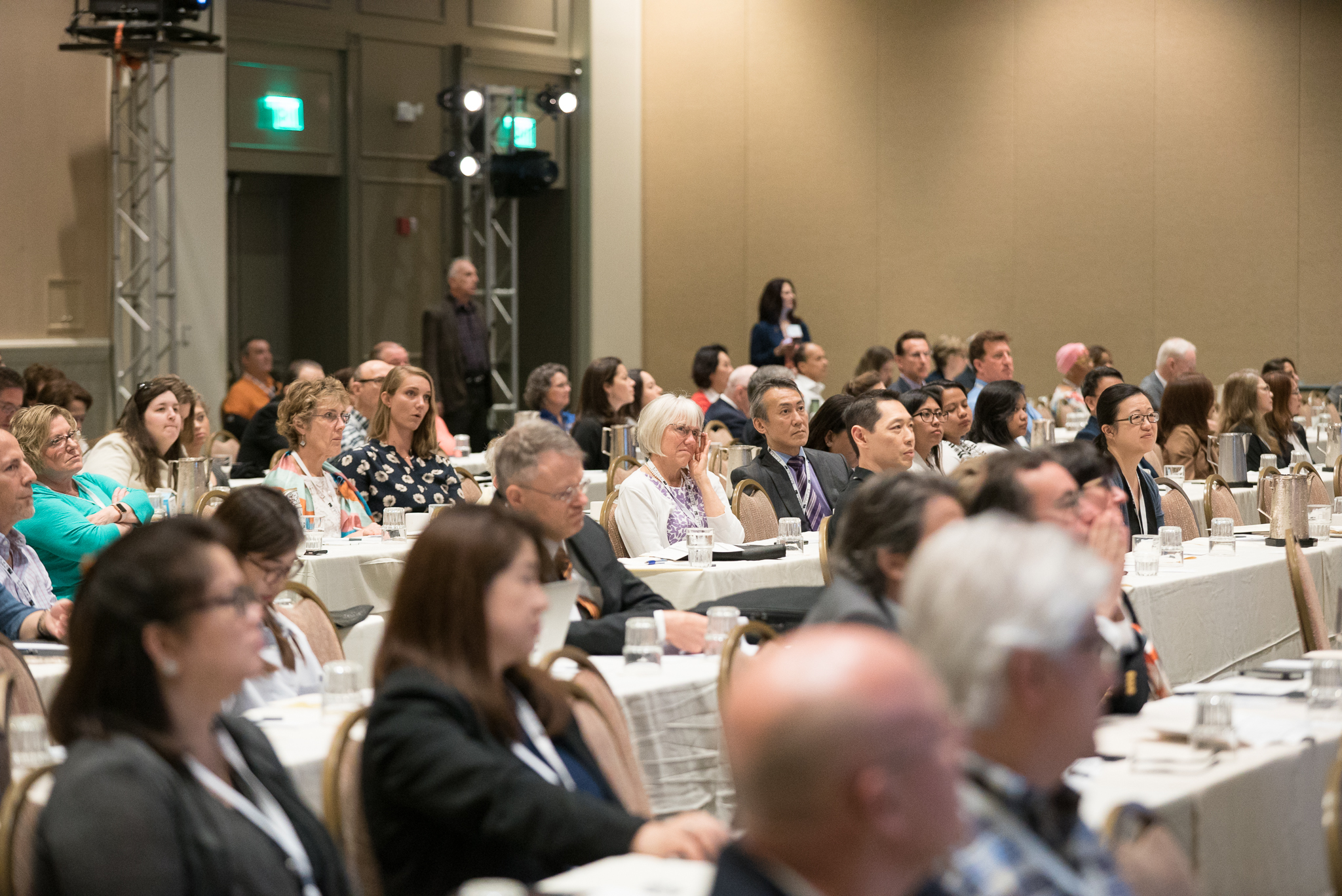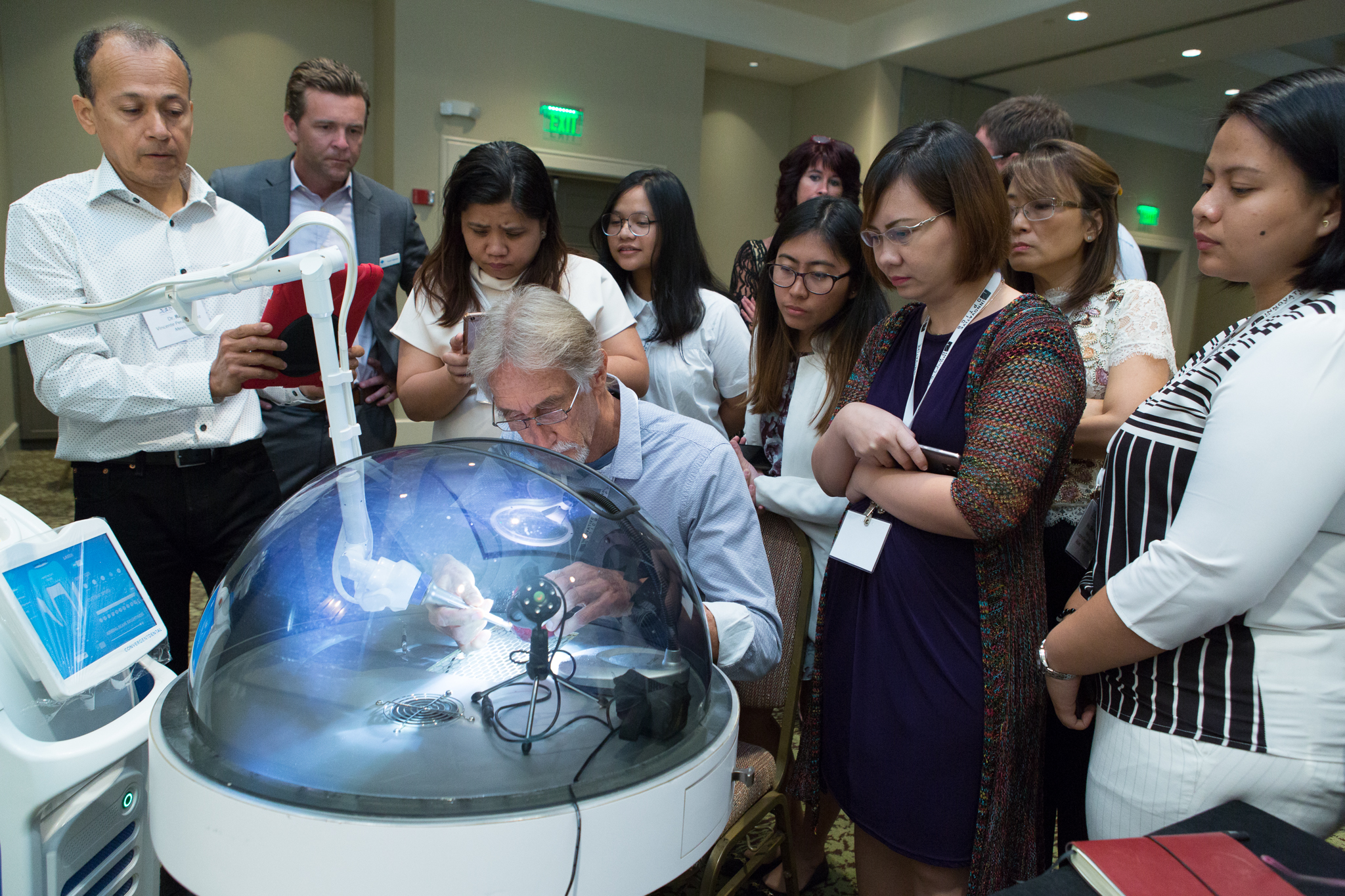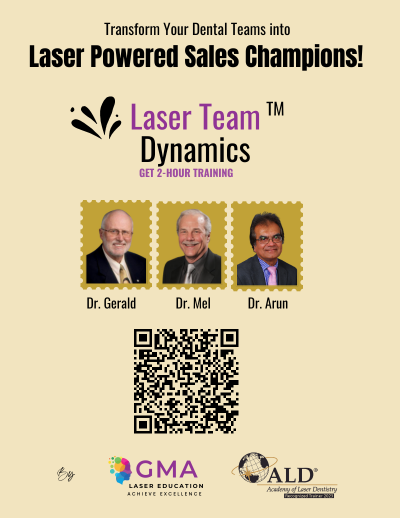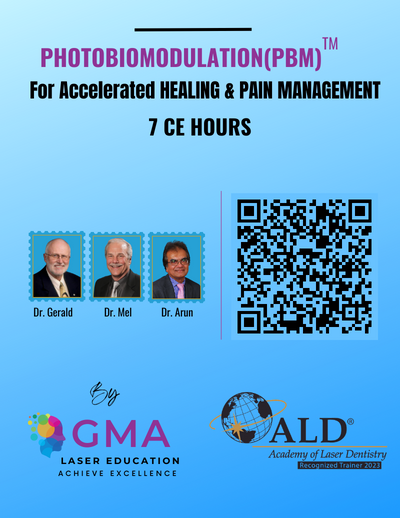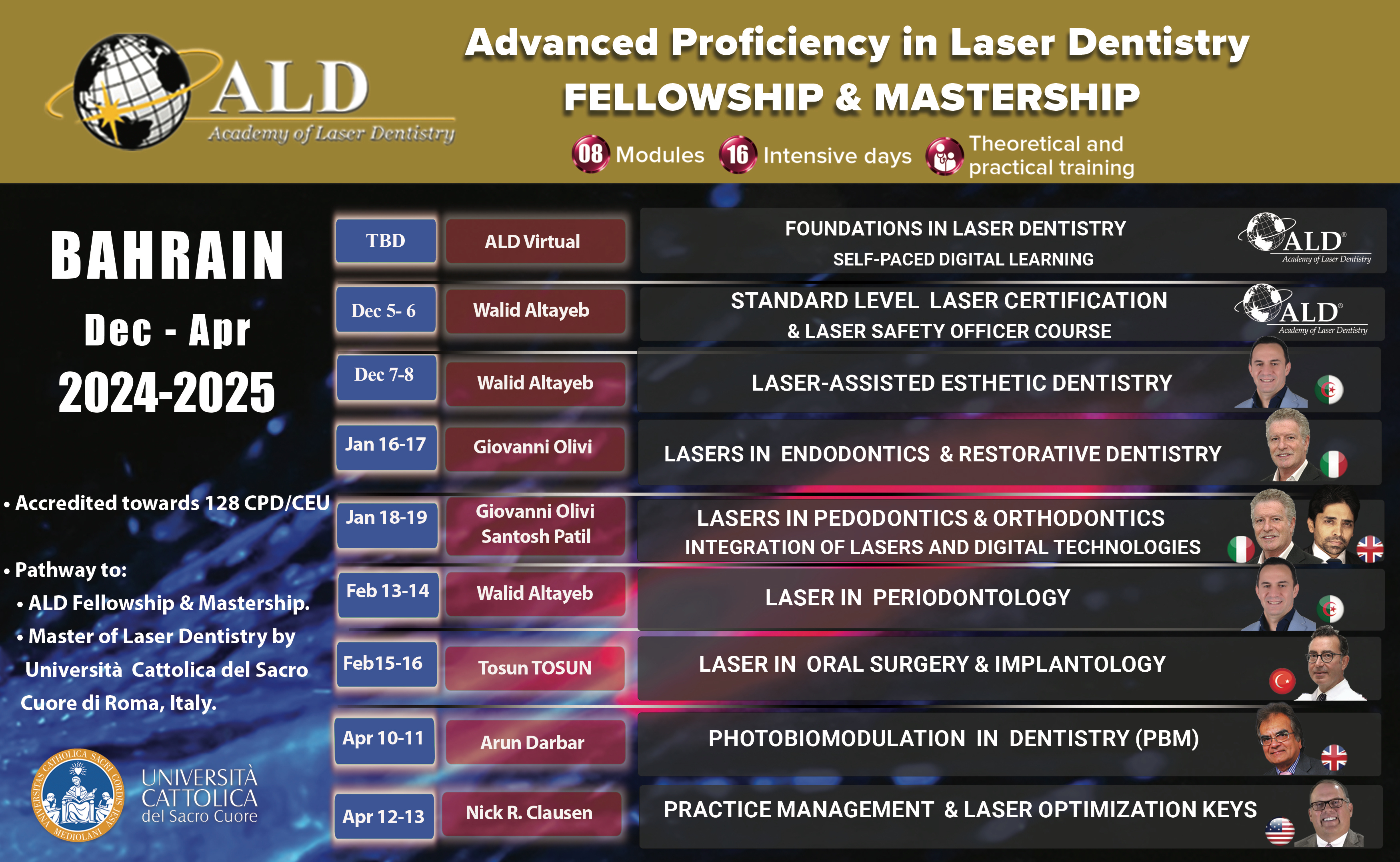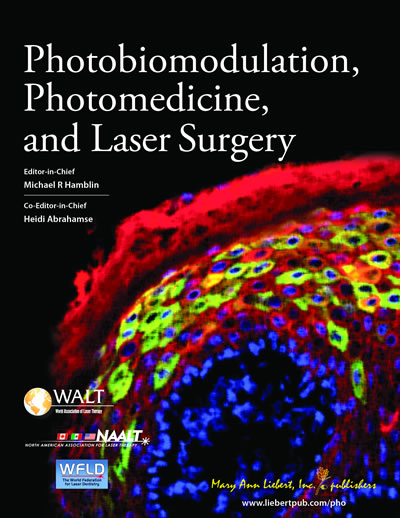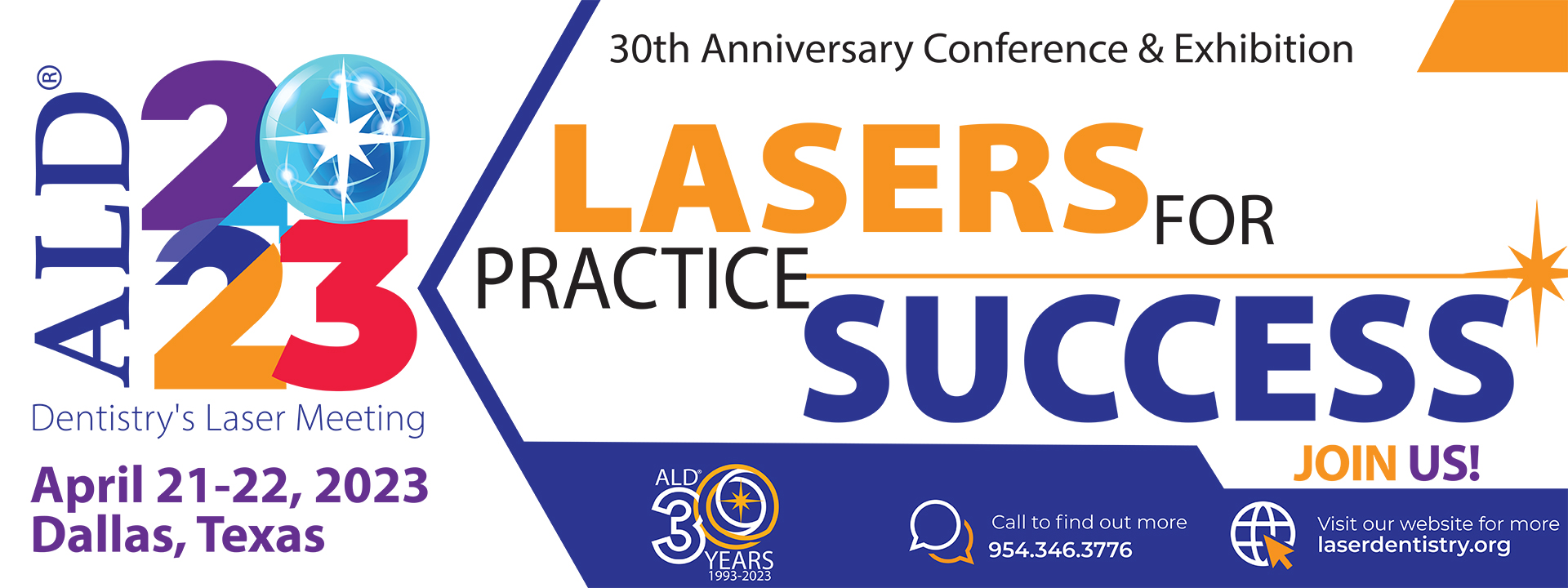
Presentation Abstracts
Listed by Date & Time
|
THURSDAY, APRIL 20, 2023 | 9:00 am - 4:30 pm
Pre-Conference (Optional) - ALD Laser Certification Programs
|
|
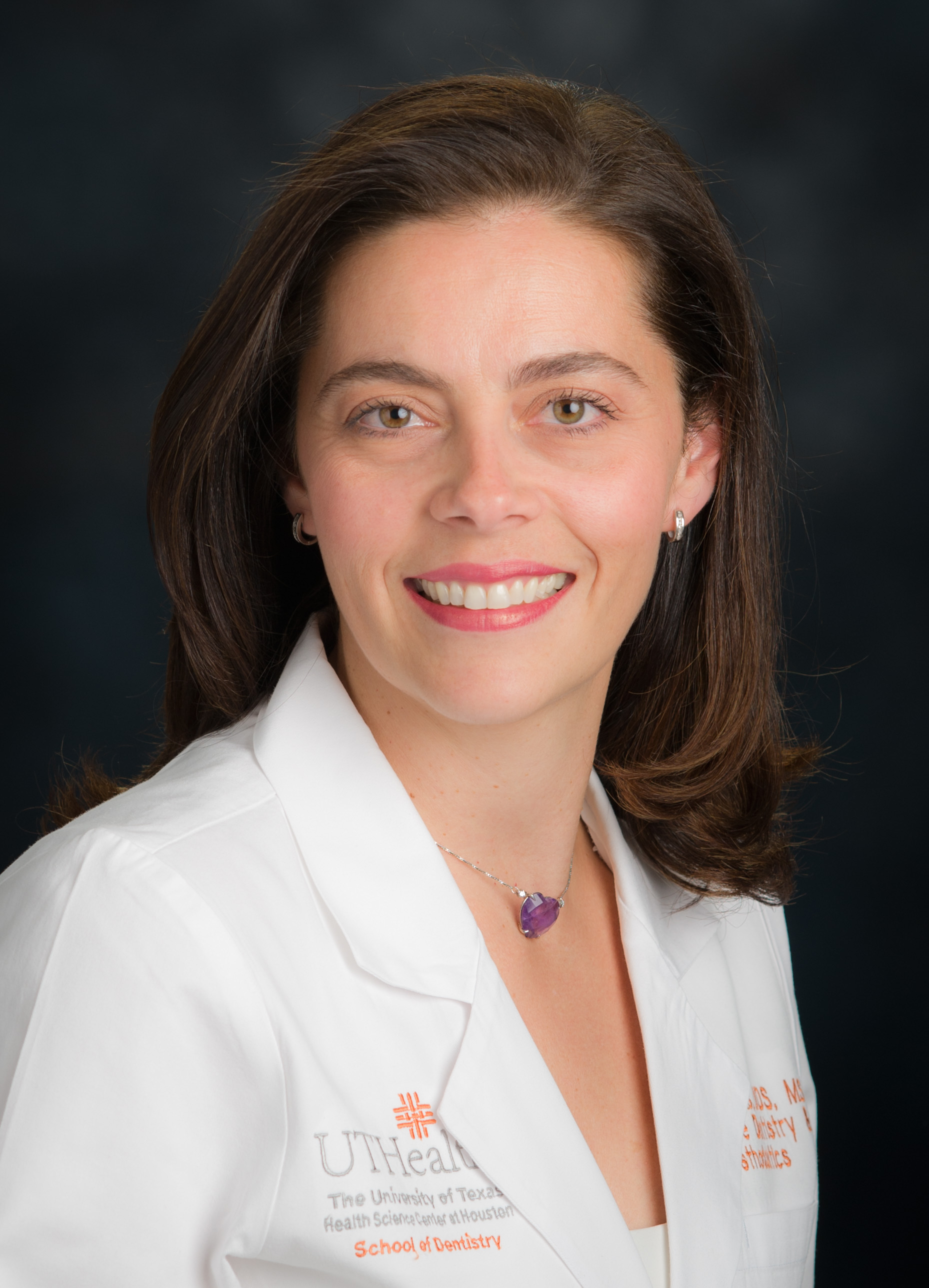


|
ALD Standard Level Course Certification
ALD Dental Laser Standard Level Certification Course
Course is full - registration closed
Juliana Barros, DDS, MS, Houston, TX | Shalizeh Patel, DDS, Houston, TX | Angie Wallace, RDH, Owasso, OK
Track: Certification
Audience: Dentists in all disciplines, hygienists, and other related staff or industry representatives who would serve as a laser safety officer.
This program is a peer-reviewed, hands-on training, comprehensive laser certificate course for the entire dental team. This program provides candidates with a strong foundational understanding of laser physics, laser tissue interaction, characteristics of various laser wavelengths, clinical case studies, laser safety, regulatory information, and a live hands-on portion.
Educational Objectives:
-
Summarize the basic principles of laser physics and laser-tissue interaction
-
Define laser terminology and its clinical applications in achieving desired clinical outcomes
-
Recognize the importance of laser safety protocols
-
Relate laser indications in various clinical scenarios
-
Demonstrate laser operation and safety features in a hands-on learning assessment
3-Part Certification Process
Part 1: Foundations in Laser Dentistry Online Digital Learning Platform - Pre-Conference Work (6 CEU’s)
We highly recommend that you complete Part 1 PRIOR to attending the conference.
- Chapter 1: Fundamentals of Light
- Chapter 2: Production of Light
- Chapter 3: Laser-Tissue and Laser-Material Interactions
- Chapter 4: Clinical Applications in Laser Dentistry
- Chapter 5: Laser Safety in Dentistry
Please note: Each chapter is followed by an assessment. You will be enrolled in the Part 1: Foundations in Laser Dentistry Course on March 1, 2023 and will receive log in instructions at that time.
Part 2: Hands-on Clinical Simulation Training and Exam (In-person, at conference on April 20, 2023)
(6 CEU’s)
This program includes a minimum of 6 hours of didactic device-specific or wavelength(s)-specific training, more than 3 hours of which are devoted to supervised hands-on activities which includes a comprehensive clinical simulation examination. Also included is a 1-hour review of the Part 1 key concepts and a course evaluation.
PLEASE NOTE: Parts 1 and 2 must be successfully completed prior to taking the Standard Level Online Exam (Part 3).
Part 3: ALD Dental Laser Standard Level Online Exam (1 CEU)
This is a timed, 1-hour exam with 75 multiple-choice questions. This is a CLOSED book exam. The online exam is administered by the Academy of Laser Dentistry. You will have access to this exam after you have completed both parts 1 and 2. You will have 90 days from the hands-on course date to successfully complete the exam.
Successful Standard Level Course Completion
Upon successful completion of all 3 parts (by July 19, 2023), you will receive a Continuing Education Record of Completion and a Standard Level Course certificate noting the specific course participation and clinical simulation wavelength. You will also receive a Standard Level Course Certificate within 6-8 weeks from the course close date of July 19, 2023.
Back to top
|
|
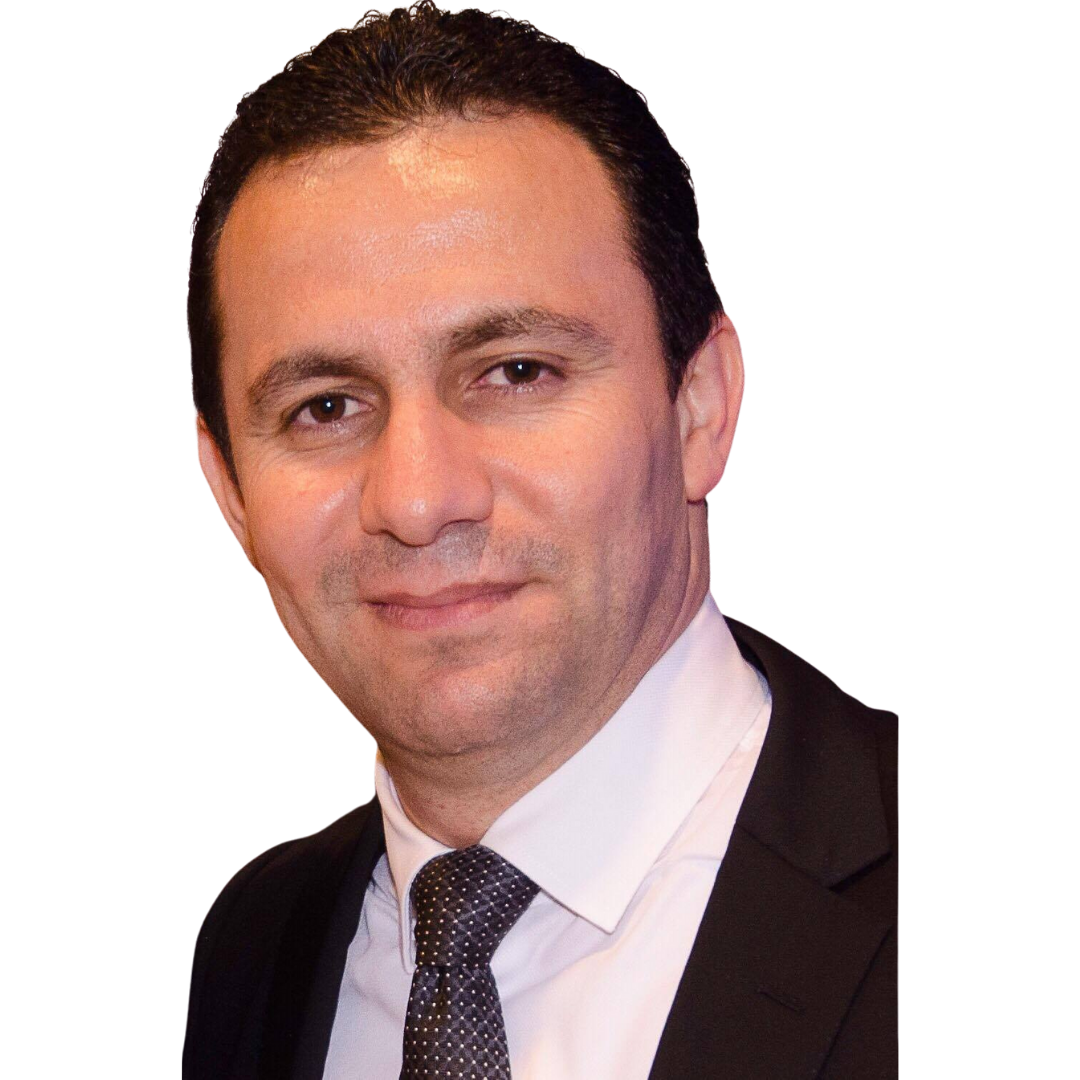
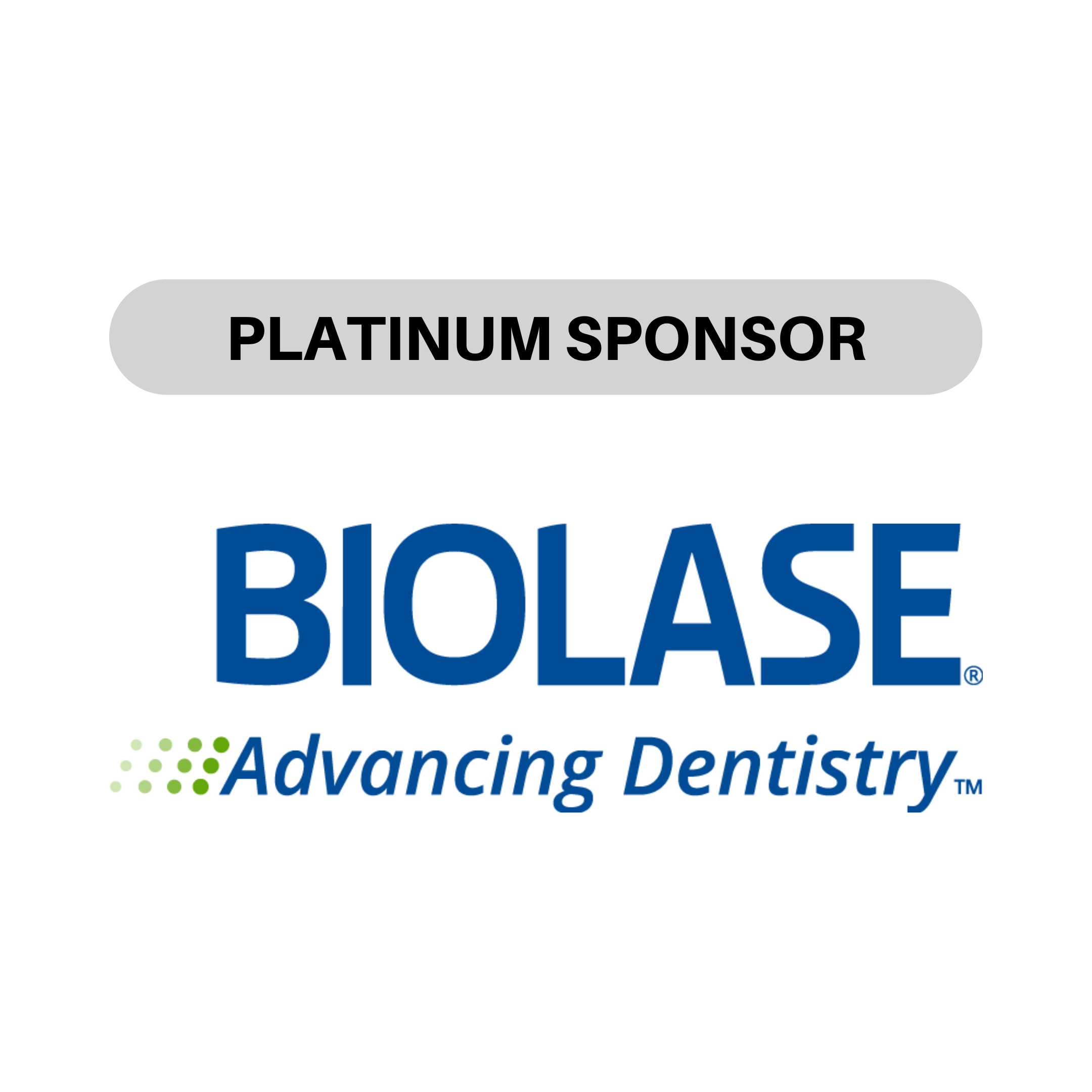
|
ALD Fellowship/Mastership Module
Esthetics Module: Laser-Assisted Esthetic Dentistry - Advanced Module
Track: Laser Dentistry
Audience: Advanced
Download Course Schedule here.
This 6-hour CE program is a deep dive into the use of lasers for esthetic dentistry. The topics covered through lecture and video are followed by at least 3 hours of hands-on participation with specific instruction on esthetic procedures. This program assumes that the attendee has knowledge of laser-assisted dentistry and wants to learn and demonstrate advanced skills. This program satisfies one module of the ALD’s Fellowship and Mastership Advanced Certificate program.
Laser topics covered:
- Management of gummy smile
- Flap vs. flapless esthetic crown lengthening
- Functional crown lengthening
- Gingival depigmentation
- Soft tissue procedure prior to restorative treatments
- Lip repositioning surgery
- Management the iatrogenic damages caused by restorative procedures
- Laser-assisted ceramic restoration removal
Educational Objectives:
- Outline the applications of laser usage in esthetic dentistry.
- Describe the concept of bio-esthetics in periodontology and how lasers could serve to achieve it.
- Review of the classification and treatment planning for gummy smile.
- Demonstrate the surgical techniques when performing esthetic crown lengthening with lasers.
- Compare flap and flapless esthetic crown lengthening using lasers.
- Evaluate and compare the efficacy of different laser wavelengths in removal of gingival hyperpigmentation.
- Plan the soft tissue preparation prior to prosthetic treatments.
- Adapt the correct laser parameters to achieve an excellent esthetic result.
Back to top
|
|
FRIDAY, APRIL 21
8:30 am - 12:10 pm - General Sessions
|
|
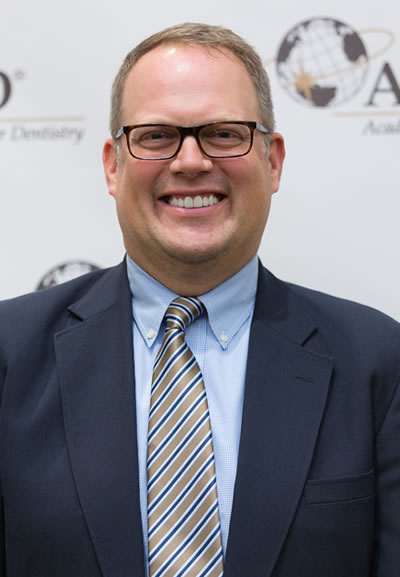
|
8:30 am - 9:15 am Keynote
Keynote: How to Leverage Your Laser to Transform Your Business
Nick Clausen, MBA | West Des Moines, Iowa, USA
Track: Practice Management
Audience: All Levels
Laser dentistry can create a better patient experience and better clinical results. Optimal laser implementation can also lead to compounded practice growth when done with intention and the entire team is involved. Understand how to leverage your laser to increase profitability by attracting more new patients and increasing case acceptance and ‘same-day-dentistry.’
Educational Objectives:
- Recognize the unique characteristics of the dental marketplace and how to dramatically reduce patient anxiety utilizing your laser.
- Learn why and how a laser can transform both the patient experience and practice production.
- Summarize the communication tools and processes to increase case acceptance/enrollment of a variety of laser procedures.
- Understand how to simply and for free leverage the laser patient experience to dramatically increase new patient flow.
Back to top
|
|


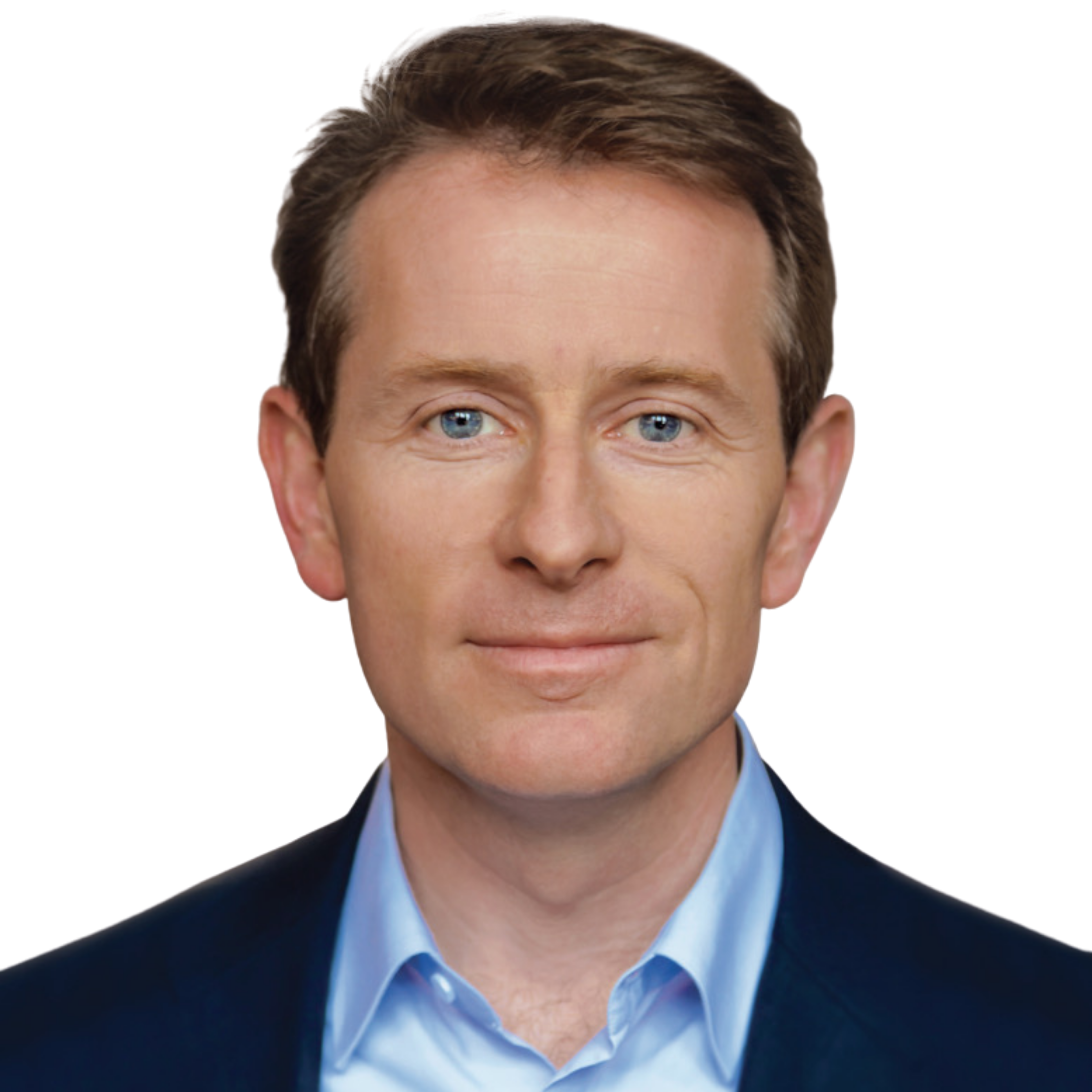
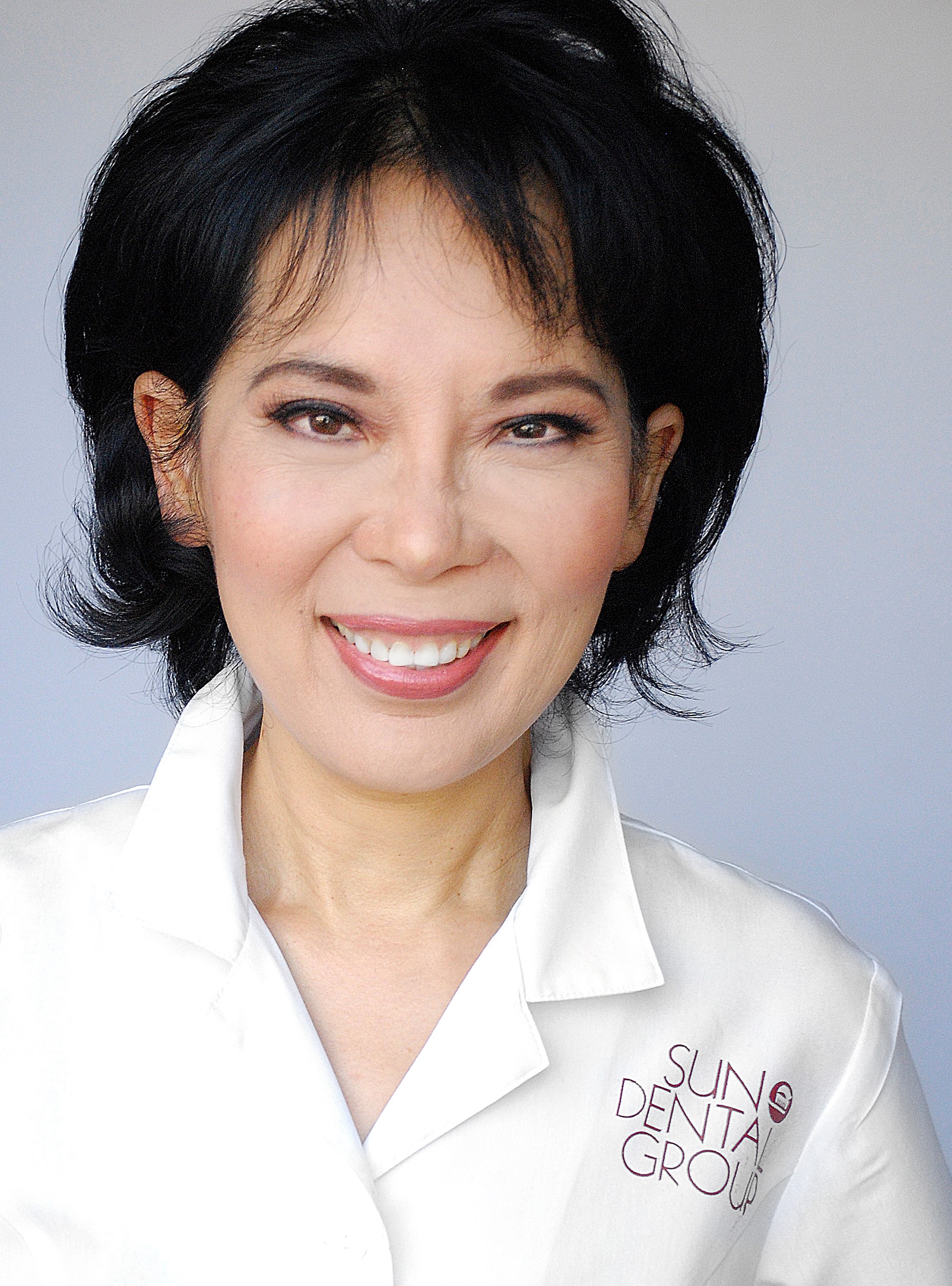
|
9:15 am - 10:15 am ALD General Session
Taking Photobiomodulation to the Mainstream Use in Dentistry
Moderator: Dr. Chris Walinski
Panelists: Dr. Praveen Arany, James Carroll, AMInstP, FRSM, Dr. Grace Sun
Track: Photobiomodulation (PBM)
Audience: All
With over 100 random clinical trials (RCTs) showing that Photobiomodulation (PBM) is safe and effective for a range of painful and non-healing conditions, why is PBM not considered standard treatment in dentistry?
For this session, we will invite representatives from the ADA, NIDCR, FDA, CMS*, along with dentists with regulatory and reimbursement experience, to present and participate in a panel session. Topics discussed will include the steps necessary for PBM to become a mainstream procedure and the role each of the organizations play to help meet this goal. Audience participation is welcome during a Q&A session.
Educational Objectives:
- Provide a brief overview of Photobiomodulation in dentistry
- Learn the essential steps to reimbursement
- Understand the industry’s role in the solution
- Learn how to bill for some PBM procedures now
Back to top
|
|
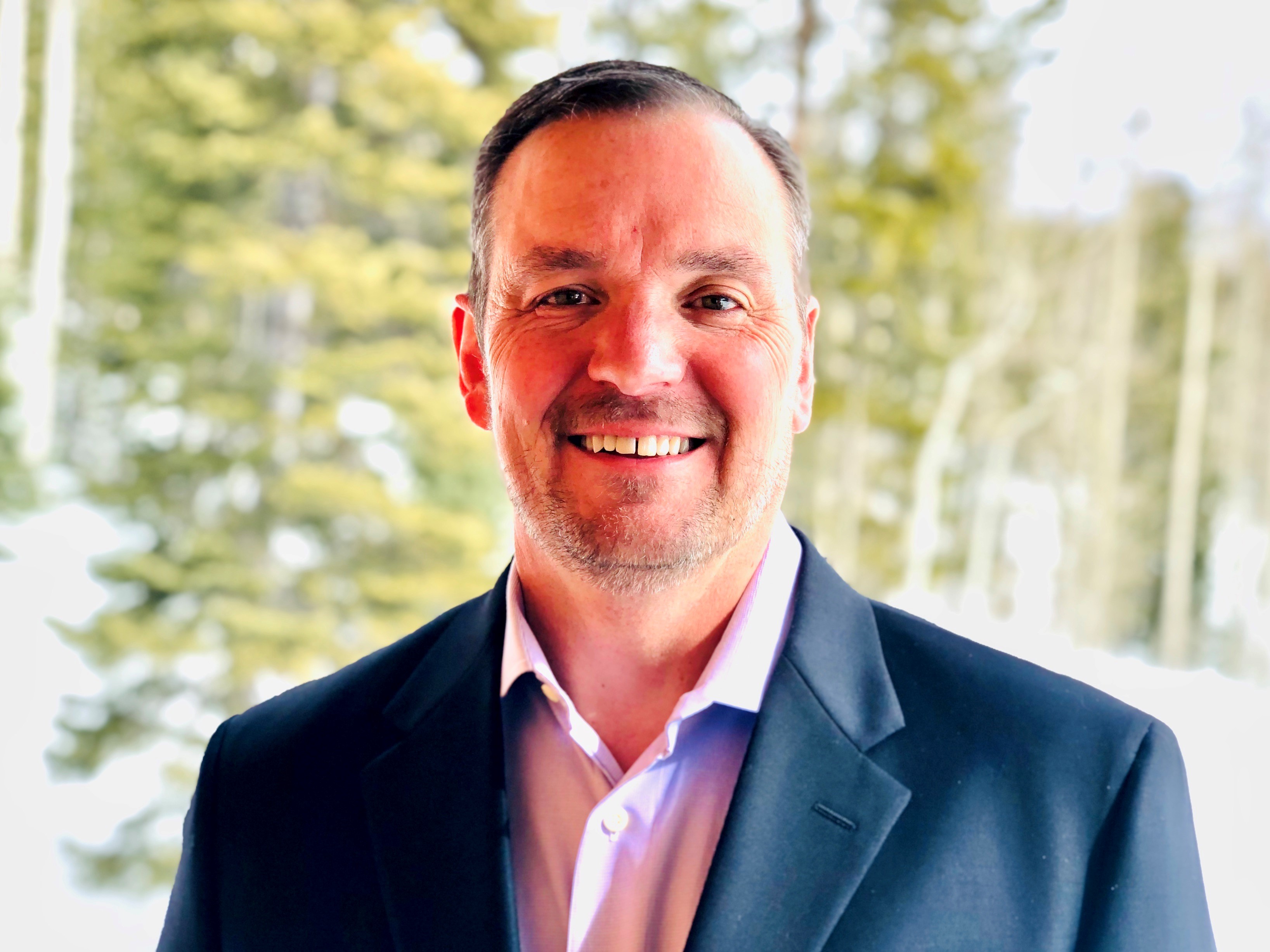
|
11:00 am - 11:30 am General Session
An Introduction to Dental Sleep Medicine
Jeffrey Harrison, DDS | Cortez, Colorado, USA
Track: Emerging Technologies (Sleep, Functional Growth and Development)
Audience: Novice
Why did the mouth get separated from the rest of the body? Where is the line of distinction between practicing Medicine versus Dentistry? Are you aware that every day, 1 of every 4 adults you see is suffering (usually unknowingly) from a not-so-silent killer known as obstructive sleep apnea? In large part, Medicine has failed to adequately identify and treat most of these patients and now dentists are finding themselves being asked to serve on the frontline for screening, helping patients get diagnosed, and oftentimes playing a key role in their management.
Make 2023 the year you begin recognizing the dental warning signs and symptoms of sleep-related breathing disorders. Begin collaborating with other healthcare providers and give the gift of improved breathing, sleep, and overall wellness to your patients.
Educational Objectives:
-
Provide an overview of dental sleep medicine
-
Enumerate the signs and symptoms of sleep-related breathing disorders
-
Appreciate the prevalence of the obstructive sleep apnea epidemic
-
Summarize the protocol to follow in dental sleep medicine
Back to top
|
|

|
11:30 am - 12:00 pm ALD General Session
The 10 Commandments of “En-Lightened” Dentistry
John J. Graeber, DMD | Morristown, NJ
Track: Laser Dentistry
Audience: All Levels
Lasers have been with our profession for more than 30 years! Much has been learned about each of the wavelengths. Much still needs to be learned and more importantly, much more research needs to prove the efficacy of laser usage. The majority of our dental colleagues have yet to embrace the benefits of lasers in dentistry. Why? Why has dental education not kept up with leading technological advances? Have dental professionals been overly trained and poorly educated?
Educational Objectives
- Recognize the most important concepts of laser use.
- Describe how to optimize laser surgical outcomes.
- Explain how not to burn tissue.
- Appreciate the value of magnification and lighting to enhance results.
Back to top
|
|
FRIDAY, APRIL 21
1:45 pm - 5:15 pm Workshops
|
|
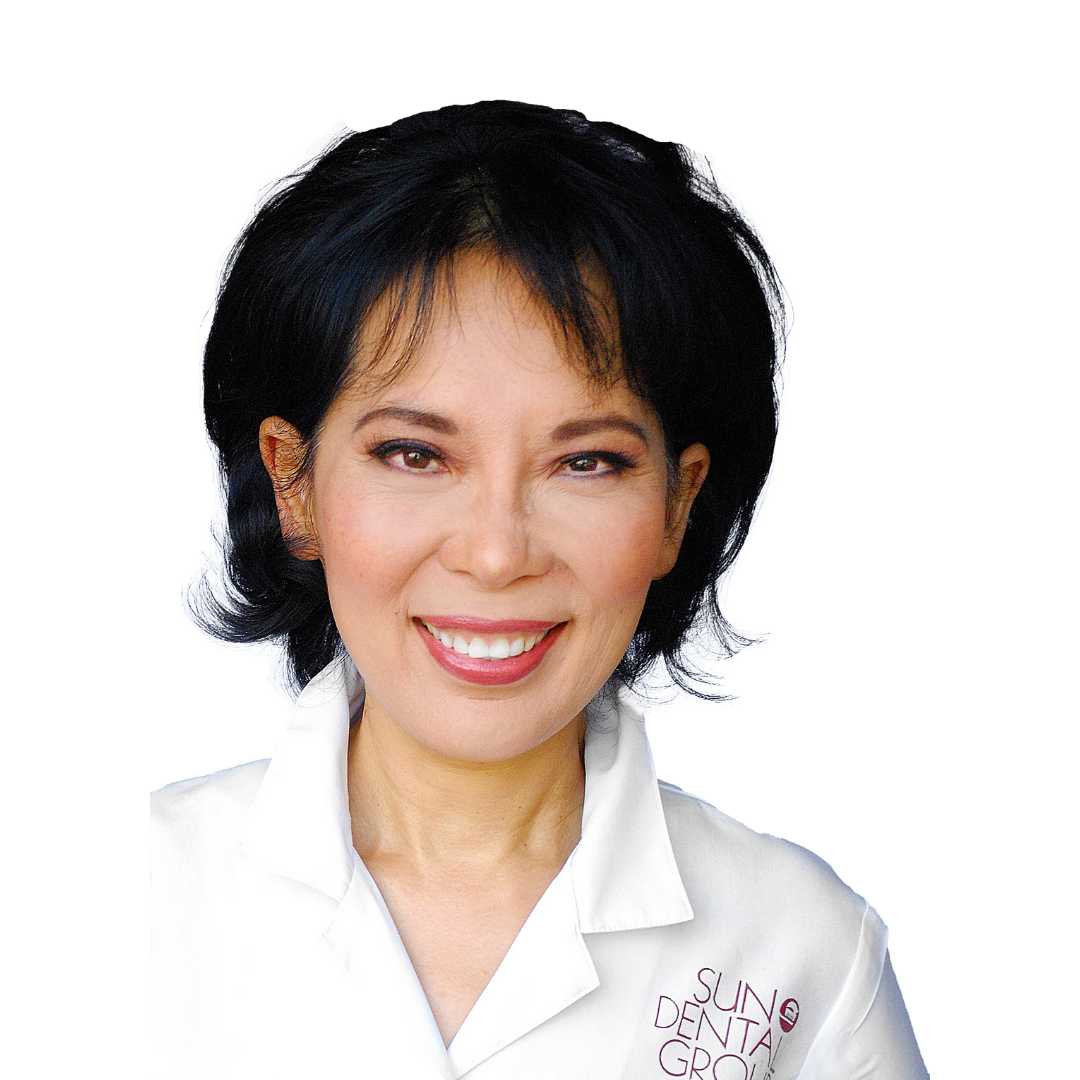
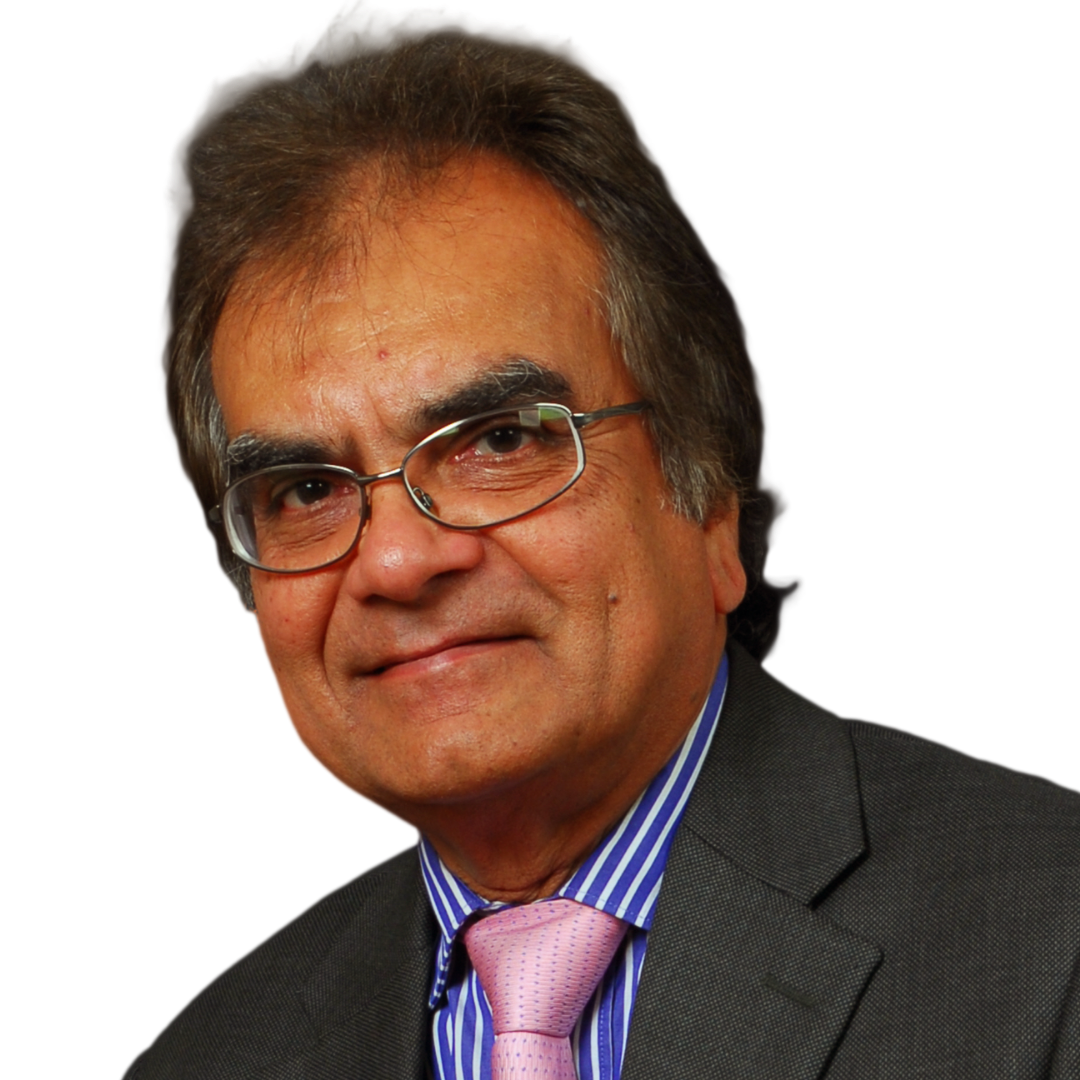
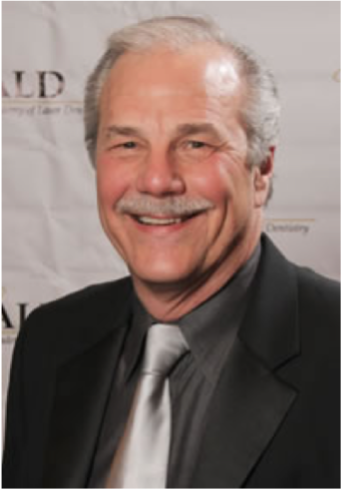
|
1:45 pm - 5:15 pm Workshop
PBM: A Practical Workshop
GMA Laser Education: Grace Sun, DDS, FAACD, MALD, MAGD, MICOI | Los Angeles, CA, USA; Arun Darbar, BDS, DGDP(UK) | Leighton Buzzard, Bedfordshire, United Kingdom; Mel A. Burchman, DDS, MALD | Langhorne, PA, USA
Track: Photobiomodulation (PBM), Laser Dentistry
Audience: All Levels
Photobiomodulation therapy (PBMT) is an important (and exciting!) part of laser dentistry, providing many benefits for enhancing patient experience and improving treatment outcomes. PBMT has been gaining popularity in recent years, and as such, it is important to grasp its mechanisms and its clinical applications. This 3-hour workshop will equip participants with the practical take-home knowledge necessary to administer PBMT right away.
Educational Objectives:
-
Understand the scientific basis for PBM therapy and its clinical significance in pain reduction and wound healing.
-
Learn the progression of PBM and the difference between lasers and light-emitting diodes (LEDs).
-
Describe proper pre- and post-treatment conditioning for analgesic and lymphatic system benefits.
-
Review PBM dosage principles to obtain desired clinical effects, including the alleviation of xerostomia, dentin hypersensitivity, mouth sores, angular cheilitis, lichen planus, and more.
Device Information:
Oral IQ's PBM Light: 630 nm, 660 nm, and 850 nm. PBM Light +: 660 nm, 850 nm and 940 nm. PBM PRO: 470 nm, 630 nm, 660 nm, 850 nm and 940 nm. Other devices to be determined.
|
|

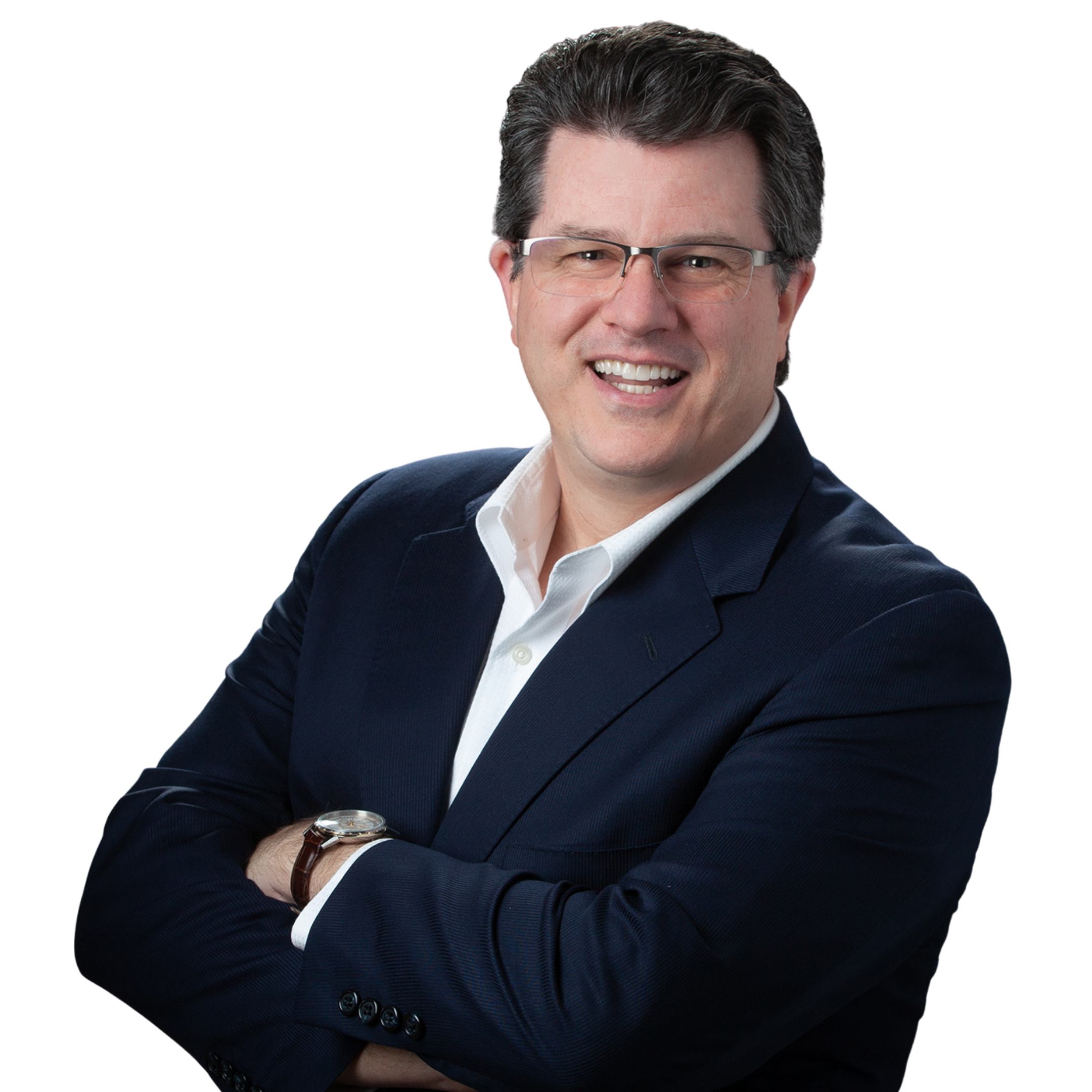

|
1:45 pm - 5:15 pm Workshop
Pathway to Success in Dental Sleep Medicine
Jeffrey Harrison, DDS | Hollywood, Florida, USA
Track: Emerging Technologies (Sleep, Functional Growth and Development)
Audience: Novice
Starting and growing a thriving dental sleep medicine (DSM) practice has proven difficult to many dentists who try to do it on their own. In fact, only a select few have succeeded in a truly significant way. Even fewer have found robust success the way the founding ApZme practices have. In this hands-on workshop, Dr. Harrison will demonstrate and teach a DSM protocol used by all Sleep Group Solutions practices showcasing a proprietary acoustic pharyngometer technology known as EccoVision. EccoVision uses acoustic wave technology to measure size and distance of the entire nasal and oropharyngeal airway. Comparing a baseline size to its collapse guides dentists in uncovering their "at-risk" patients and also helps the providers determine the potential response a patient will have with jaw repositioning via oral appliance therapy. Limited home sleep testing devices will also be available for those wanting to complete an overnight study of their sleep. Obstructive sleep apnea, the not so silent killer, is impacting over 1 in 4 of your patients today, please come learn how to save a life, not just teeth.
Educational Objectives:
- Discover "why" dentists are being asked to screen their patients for sleep-related breathing disorders and "how" to do this quickly and painlessly.
- Understand the workflow involved with moving a patient down the pathway of dental sleep m taking one all the way from screening to diagnosis and into therapy.
- Learn how to efficiently achieve effective patient outcomes with oral appliance therapy using EccoVision.
Sleep, Snoring, and Airway Issues: Why Do Lasers Matter?
Scott Parker, DDS, Woodland Hills, Utah, USA
Track: Emerging Technologies (Sleep, Functional Growth and Development
Audience: All Levels
As dentists, we are often the first to recognize the signs of sleep disorders in our patients. While we continue to make progress in understanding the negative impact of sleep disruption and airway challenges in our society, we must continue to increase our knowledge and treatment options in order to improve the lives of our patients. Currently, oral appliance therapy (OAT) shows reasonable improvement in many sleep disorder conditions. But, what about our patients that don’t respond well to traditional OAT or continuous positive airway pressure (CPAP)? And, how do we address our low body mass index (BMI) middle-aged patients with a low apnea/hypopnea index (AHI) that will not wear an oral appliance but sleep poorly? Being able to offer the benefits of fractional laser therapy allows us as clinicians to make a positive impact on our patients, whether in appliance therapy or not. We are seeing tremendous improvement in AHI, quality of sleep, and improvement in mental clarity with a simple 5-minute procedure. Utilizing a DEKA CO2 fractional laser is one of the most efficient and effective first lines of defense that a clinician can use to improve quality of sleep. When treatment of snoring and airway issues is performed correctly, it can give instant relief as well as long-lasting improvement in the elasticity of collagen. This improvement can lead to more restful sleep, improved relationships with a significant other, and more productive mental focus and overall well-being.
Educational Objectives
- Differentiate between laser wavelengths for treating sleep disorders.
- Dispel fallacies regarding scar tissue and charring.
- Discuss available options for monitoring airway treatment progress.
- Describe protocols for treating snoring and airway issues with the DEKA UltraSpeed CO2 laser.
Treatment of Snoring with the 9.3 micron CO2 Laser
Anthony Bolamperti, DDS, Omaha, Nebraska, USA
Track: Emerging Technologies (Sleep, Functional Growth and Development
Audience: All Levels
It is likely that more than 65% of your adult patients snore, often disturbing both their and their bed partner’s sleep. People who snore typically have an airway issue, and that can complicate other systemic health issues, including an increased risk of cardiovascular disease and stroke.1 Dr. Anthony Bolamperti will discuss how to identify patients who snore and how the 9.3 µm CO2 all-tissue dental laser can provide patients with rapid relief by tightening and stiffening collagen in the soft palate.
- Learn how to diagnose snoring in the dental practice.
- Describe treatment of snoring with the 9.3 µm CO2 all-tissue dental laser.
- Summarize diagnosing tethered oral tissues (TOTs) and available treatment solutions.
Back to top
|
|

|
1:45 pm - 5:15 pm Workshop
Laser-Assisted Soft Tissue Applications in Every Day Dentistry
John J. Graeber, DMD | Morristown, NJ
Track: Laser Dentistry
Audience: All Levels
A diode laser can replace most conventional techniques utilized to manage soft tissue in the oral cavity. However, these laser devices are not utilized with the same techniques as scalpels, knives, and sulcular retraction cords. Unique diode laser techniques are taught and practiced in this workshop. Simulated in vitro exercises will simulate the most common soft tissue surgical and manipulative procedures. All procedures taught are shown in microscopic videography. A review of basic contact laser techniques and laser safety is included.
Educational Objectives:
- Practice the most common clinical laser procedures on in-vitro models.
- Learn the proper surgical techniques using Diode lasers
- Experience how Diode Lasers can simplify Surgical Procedures in Dentistry
- Apply these skills to work Monday Morning in their own offices
Back to top
|
|

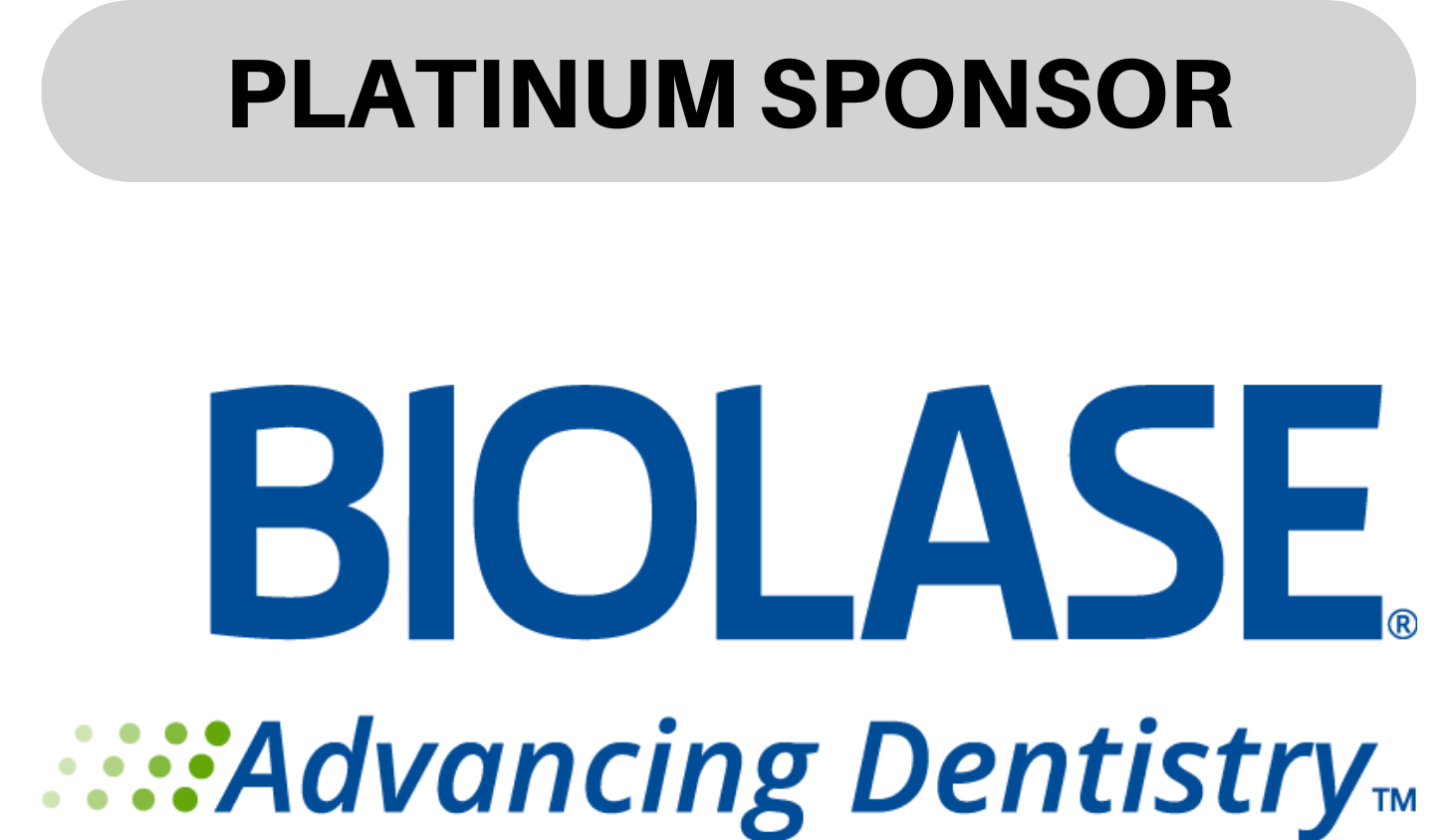
|
1:45 pm - 5:15 pm Workshops
Restorative Dentistry: Doing Laser Cavity Preps Without Anesthesia That Will “WOW” Your Patients and Increase Production
Nick Clausen, MBA, West Des Moines, Iowa, USA
Track: Laser Dentistry
Audience: All Levels
Laser restorative dentistry is different, NOT harder, than traditional dentistry. Many times new laser owners try their laser on a restorative case, but due to an initial ‘bad experience’ the laser is not used on a cavity prep ever again. I hear time and time again that lasers are slow or they don’t work on cavity preps. However, with some foundational understanding of what causes those ‘bad experiences,’ what to avoid, and what are the critical technique keys and power adjustments, clinicians can not only do restorative dentistry without anesthesia, but can WOW their patients in prep times of 30 seconds to 3 minutes depending on the case. With a little bit of commitment, you can transform your patients’ dental experience!
Educational Objectives
- Describe the 3 crucial technique keys required to efficiently and effectively ablate tooth structure.
- Know how to proactively manage power output for maximum patient comfort.
- Review how to laser pre-frame and communicate with your restorative patient.
- Implement laser restorative case planning for optimal success.
Back to top
|
|
SATURDAY, APRIL 22
8:30 am - 12:30 pm General Sessions
|
|

|
8:30 am - 9:00 am ALD General Sessions
PBM and Acupuncture in OroFacial Pain Management
Grace Sun, DDS, FAACD, MALD, MAGD, MICOI | Los Angeles, CA, USA
Track: Photobiomodulation (PBM)
Audience: All Levels
More than half of all Americans experience pain. 20-30% of these people suffer from orofacial pain. As health care practitioners we need to manage the pain as well as address the etiology in order to bring about the best outcome for the patient. While current, traditional treatment modalities are both respected and important, an integrative approach is essential, including photobiomodulation therapy (PBMT), acupuncture and Traditional Chinese Medicine (TCM), chiropractic medicine, osteopathic medicine, etc. Photobiomodulation treatment, a therapeutic form of red and infrared light therapy, has come to be a unifying term covering low-level laser treatment (LLLT), sourced from laser and/or light-emitting diode (LED) devices. PBM therapy increases healing efficiency, including reduction of inflammation and faster muscle recovery. Acupuncture, a complementary pain management modality, stimulates neurological responses including endorphin release and, by activating the meridian channel, reversing stagnation (pain) and increasing the flow of vital energy. These two modalities are in fact interdependent, complementing and fortifying one another’s benefits. The meridian system can complementarily be activated with PBM when PBM is directed to the correct location. Meridian mapping techniques, the identification of correlated meridian points and anatomical landmarks, will be discussed.
Educational Objectives:
-
Understand the significance of exploring alternative approaches to pain management.
-
Review integrative approaches, including PBM therapy and acupuncture.
-
Summarize the functional mechanisms of photobiomodulation and acupuncture.
-
Learn how to integrate PBM into your patients’ home care program.
Back to top
|
|
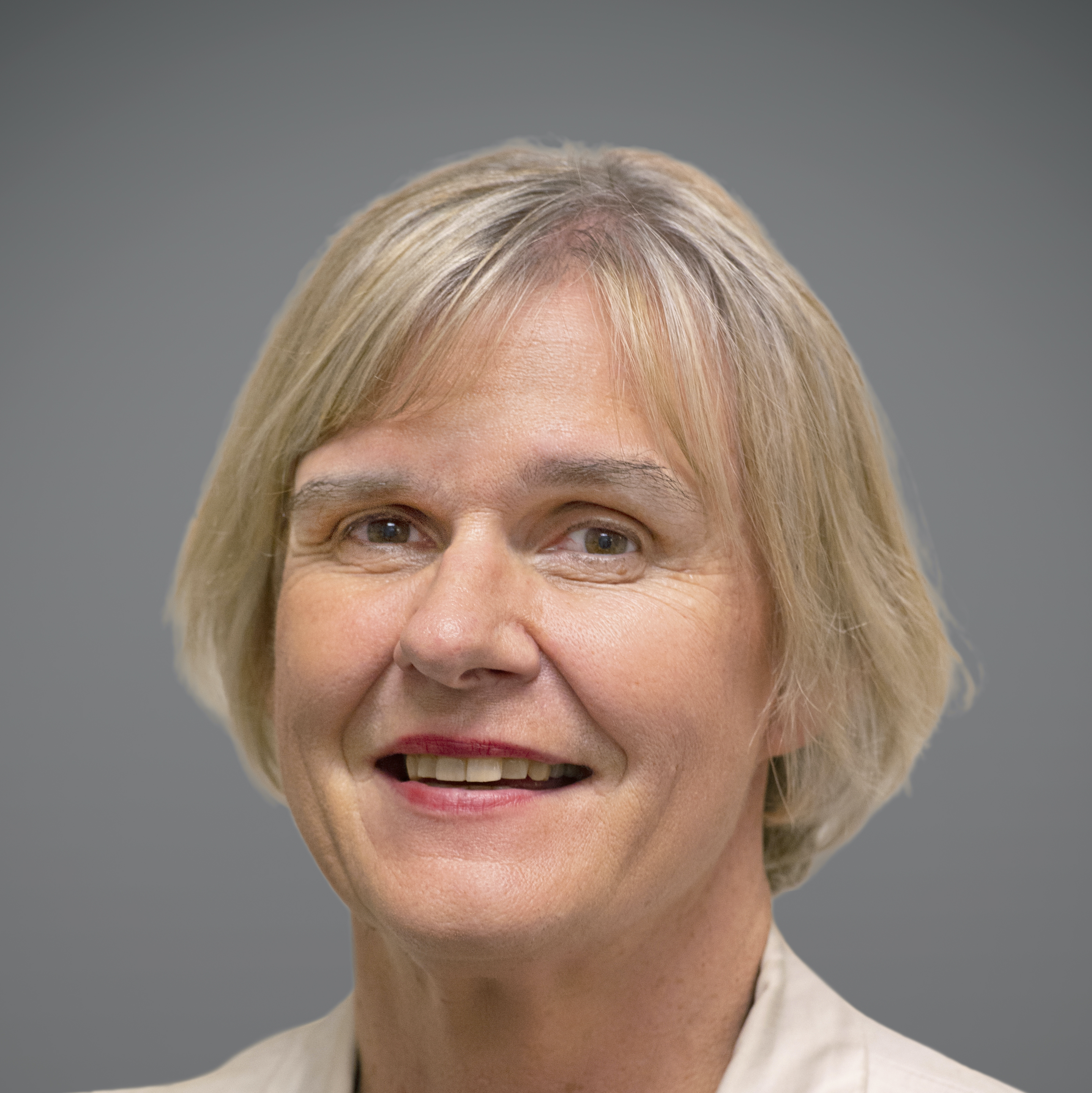
|
9:00 am - 9:30 am ALD General Session
A Comparative Twin Study of Radiation Induced Side Effects and Their Mitigation by a PBM Protocol in Equivalent Head and Neck Cancer
Ann Liebert, PhD | Sydney Australia
Oral mucositis (OM) is a common side effect of radiation therapy for cancers, which has major consequences for the patient including severe pain, systemic infections, reduced nutritional intake, and adverse quality of life. The standard care currently available for OM is symptomatic, mainly directed towards pain remission (topical analgesics and parenteral drugs) and the prevention of secondary infection which have effect in the prevention and management of OM. Photobiomodulation therapy (PBMt) has been shown to stimulate tissue regeneration, reduce inflammation and control pain. The National Institute for Health and Care Excellence (NICE) has included PBMt as recommended therapy for preventing OM caused by radiotherapy or chemotherapy, and the Multinational-Association of Supportive Care in Cancer and the International Society for Oral Oncology (MASCC/ISOO) found the evidence for LLLT/PBMt in the prevention of OM in patients to be safe and potentially very effective.
A Quality Assurance study of the efficacy of pre-emptive PBMt to prevent/reduce severity of OM in radiotherapy patients was conducted at the San Hospital in Australia. Patients were given PBMt daily from before radiotherapy and throughout therapy, including home-treatment when the clinic could not be attended.
Results were clinically positive, with no patient in the study developing OM beyond level 1. One participant presented a unique opportunity to compare OM treatments and outcomes, as his twin brother suffered the same cancer and was treated with the same radiation therapy, but without PBMt, a number of years previously. Implications of the therapy will be discussed.
Learning Objectives:
- MACSS guidelines protocol implementation and their modification during COVID lockdown.
- Mechanisms of action of PBM and their implications for precision medicine.
- Local and systemic targeted protocols with lymphatics / gylmphatics considerations
- Importance of dosing in oral mucositis treatment optimization
Back to top
|
|

|
9:30 am - 10:00 am ALD General Session
Lasers, Implants, Computer-Navigated Surgery, and the Digital Workflow. How Does It All Fit In?
Robin Horton, BDS | Harpenden, Hertfordshire, United Kingdom
Track: Laser Dentistry, Photobiomodulation (PBM), Innovation in Implant Dentistry, Digital Dentistry (CBCT, Scanning Technology)
Audience: All Levels
This lecture is intended to show how lasers can and do fit in with the new exciting technologies that are currently shaping dentistry – intraoral scanners, CBCT scans and guided implant surgery, 3D printers and milling machines. In the rush to jump on board the new revolution, don't forget your lasers, they enhance the patient journey at every step. Diode lasers for photobiomodulation, tissue trimming, etc., and all-tissue lasers for site opening, flap reflections, margin exposures, bone removal and shape modification, crown lengthening, socket decortification, emergence profile shaping. The list goes on! This presentation will show how lasers enhance the digital workflow and the outcomes that can be achieved.
Educational Objectives:
-
Explain how lasers still fit in even with all the new digital pathways coming on stream.
-
Specify how to use lasers when taking intraoral scans.
-
Describe how to use lasers in extractions and guided surgeries.
-
Summarize uses of photobiomodulation in dentistry.
Back to top
|
|
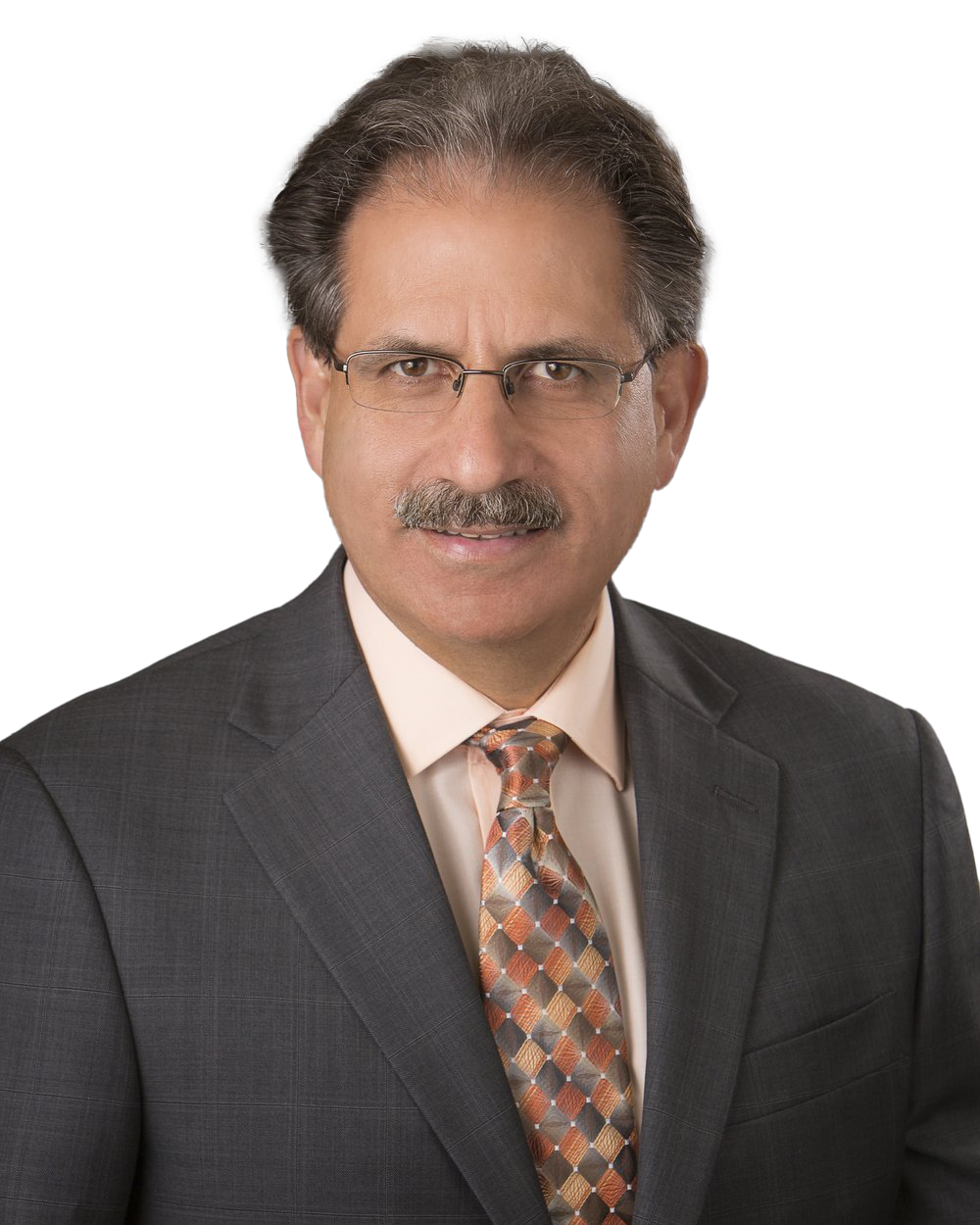
|
10:45 am - 11:15 am ALD General Session
Peri-Implantitis Revisited
Edward R. Kusek, DDS | Sioux Falls, SD, USA
Track: Innovation in Implant Dentistry
Audience: Advanced
This 30-minute lecture will provide attendees with a practical step-by-step approach for treating peri-implantitis with the use of dental lasers. Techniques include use of CO2 and erbium lasers, ozone water, and photobiomodulation to treat cases.
Educational Objectives:
-
Discover new peri-implantitis treatment procedures that have been developed since ALD’s last consensus meeting in 2017.
-
Enumerate steps to treat peri-implantitis that have been nearly 100% successful in the presenter’s practice.
-
Specify material used to treat peri-implantitis
|
|


|
11:15 am - 11:45 am General Sessions
Esthetic Crown Lengthening: Open-Flap versus Flapless
Dr. Walid Altayeb, DDS, MSc, PhD | Abu Dhabi, United Arab Emirates (UAE)
Track: Laser Dentistry
Audience: All Levels
In this short main stage presentation, an overview of esthetic crown lengthening (ECL) surgery will be described. The popularity of smile enhancement has increased the need for dental esthetic procedures to create a symmetrical and harmonious relationship between the gingival architecture, mouth, and surrounding facial structures. Esthetic crown lengthening surgery could be considered a suitable protocol for reducing the excessive gingival display associated with altered passive eruption and achieving more harmonious and symmetrical smiles. A detailed 3-hour workshop follows on this topic.
Educational Objectives:
- Discover how to meet the esthetic parameters through crown lengthening.
- Decide which surgical technique to apply in relation to the altered passive eruption diagnosis.
- Compare the clinical outcomes of erbium laser-assisted open-flap and flapless esthetic crown lengthening.
- Discuss timing for healing, temporization, and definitive restoration after surgical crown lengthening.
Back to top
|
|
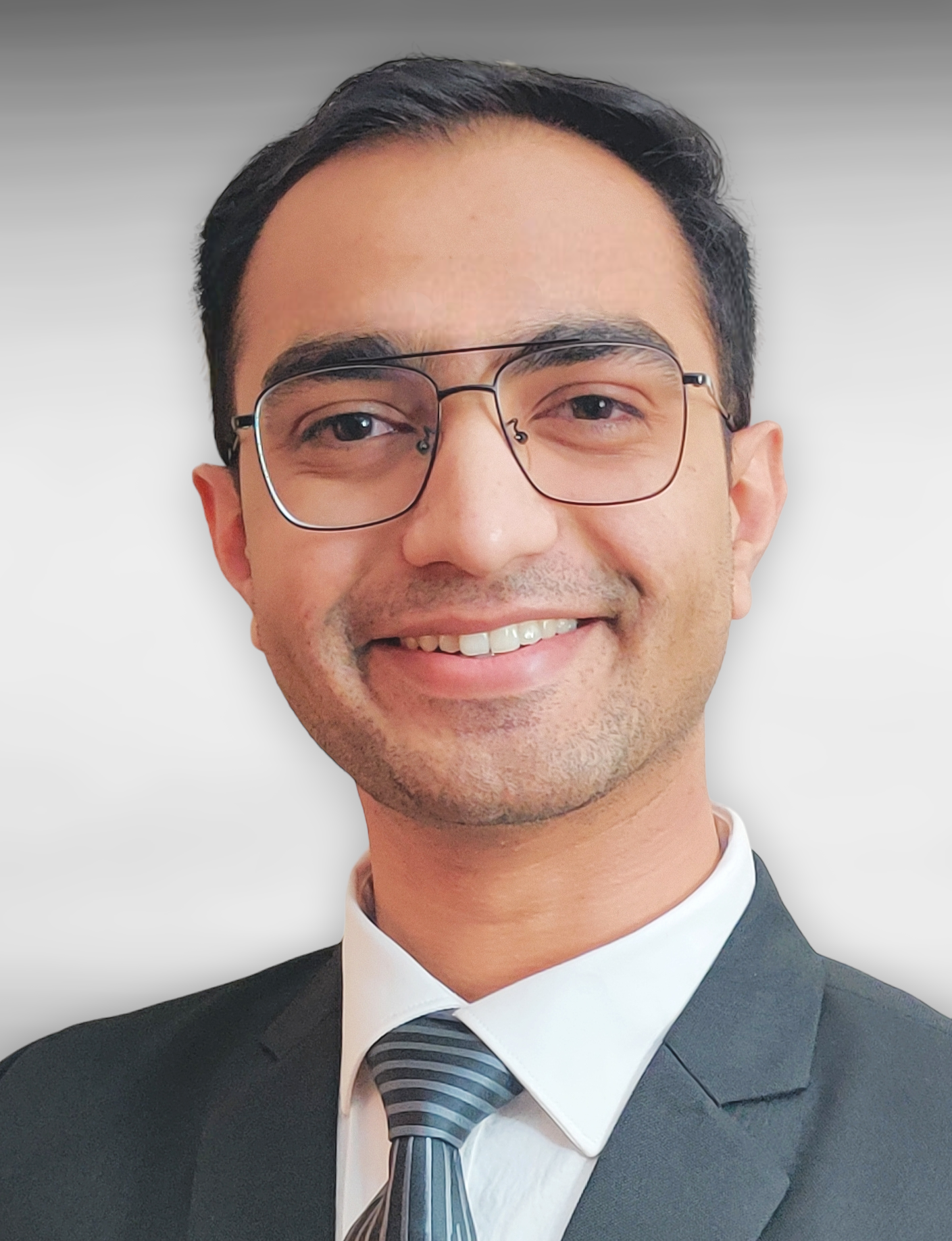
|
11:45 am - 12:00 pm
An Innovative Buffalo Fluoride Laser Odontoplasty (BFLO) Approach to Prevent Dental Caries
Ridham Vrajlal Varsani, BDS | University at Buffalo School of Dental Medicine, Buffalo, New York, USA
2023 Dr. Eugene Seidner Student Scholar
Audience: All Levels
Introduction: There has been a paradigm shift in the approach to dental caries moving from extractions and replacements to prevention and preservation of natural oral-dental structures. Lasers in dentistry have been a rapidly evolving field, with treatments gaining popularity for many oral diseases.
Objective: This work examined two discrete applications of lasers to reduce occlusal surface complexity and increase fluoride incorporation.
Methods and Materials: Deidentified extracted human teeth were collected under University of Buffalo Institutional Review Board (UB IRB) protocol (##00001193) and sectioned and embedded in a polymer block. In the first part of the study involving enameloplasty, occlusal surfaces were treated with a 2,780-nm Er,Cr:YSGG dental laser (Waterlase iPlus, Biolase, Corona, Calif.) with MGG6 4 mm and MC12 9 mm tips at three different settings, 5, 6 or 7 W at 15 Hz with 40% water spray and 60% air cooling in continuous motion. Reduction in surface complexity was assessed with microcomputed tomography and dye retention following simulated mechanical brushing. A mechanical toothbrushing simulator (V-8 Cross Brushing Machine, Sabri Dental, Downers Grove, Ill., USA) was used at settings of 4.25 Hz toothbrush motion, ~160 cycles/min, 150 g load for 500 cycles which would be considered usual for an average person.
For the second phase involving fluoride uptake, untreated tooth enamel served as control. For the test groups, silver diamine fluoride (SDF) varnish (Advantage Arrest Silver Diamine Fluoride 38%, Elevate Oral Care®, West Palm Beach, Fla.) was used alone and in combination with various laser wavelengths. SDF was applied on the enamel surfaces followed by immediate continuous-wave laser irradiation, repeated three times. Laser energy was delivered via a stationary fiber held perpendicular to the surfaces of the tooth enamel. Tooth surfaces were irradiated individually and separately at different working distances and exposure durations (see table) with constant irradiance of 30 mW/cm2. Applied dose was equal as estimated by the photonic fluence, adjusted to 3 J/cm2 which is 4.5 p.J/cm2, termed 1 Einstein*.
Phase 2 Laser Treatment
|
Laser Device
|
Wavelength (nm)
|
Working Distance (mm)
|
Exposure Duration (sec)
|
|
Dental Biostimulation Laser (Webberneedle Endo, San Diego, Calif.
|
447
|
23.6
|
12
|
|
658
|
21.6
|
54
|
|
810
|
19.2
|
60
|
|
EPIC X, Biolase, Corona, Calif.
|
940
|
96.4
|
66
|
|
P4 K-Laser, Summus, Franklin, Tenn.
|
980
|
46.5
|
72
|
|
FOX, A.R.C. Laser, Nürnberg, Germany
|
1064
|
40.5
|
78
|
Samples were then subjected to acid demineralization study in lactic acid (10.2 M) solution for five days in an incubator at 37°C with mechanical agitations and samples were collected at days 0, 1, 3, and 5. Colorimetric assays (arsenazo and malachite green) were performed with a spectrophotometer (Molecular Devices). For the statistical analyses, we studied the differences individually between (1) untreated and SDF-treated groups followed by (2) all the SDF + Laser-treated groups with the SDF-treated group. A paired t-test and ANOVA were utilized in Excel and GraphPad Prism software.
Results: We observed that laser odontoplasty significantly (n = 18, P < 0.05) reduced surface complexity and increased self-cleansing occlusal areas. The combination of a red laser (658 nm at 30 mW/cm2 for 54 sec at 1.62 J/cm2, 3 p.J/cm2 0.7 Einstein) with SDF application significantly (n = 2, P ˂ 0.05) reduced acid demineralization compared to only SDF-treated and untreated enamel surfaces. Samples treated with other wavelengths did not show any differences when compared to the SDF-treated and the untreated enamel controls..
Conclusion: We demonstrate the utility of a Buffalo Fluoride Laser Odontoplasty (BFLO) technique in reducing occlusal retentive surfaces and improving resistance to acid demineralization. This combined treatment approach can have a significant impact on clinical and public health dentistry, especially in preventing childhood caries.
* To enable comparisons of precise dose across different wavelengths (and their combinations), the term Einstein refers to wavelength-specific fluence or photonic fluence. It is calculated by adding the individual photon energy, in electron Volts (eV), to the product of the irradiance (mW/cm2) and time (sec) or simply the fluence (J/cm2). As the photonic fluence (denoted p.J/cm2) will vary dramatically across different wavelengths, we employ the fluence 3 J/cm2 at 810 nm, that has photon energy of 1.5 eV or photon fluence of 4.5 J/cm2 as 1 Einstein. Thus, we can compare total energy utilized for each treatment most precisely in a wavelength-independent and combination-wavelength (simple sum of both photon fluences and one Einstein value) manner.
Educational Objectives:
- Appreciate the biophysical basis of surgical and nonsurgical hard tissue laser applications.
- Assess feasibility of laser odontoplasty to increase self-cleansing occlusal surfaces.
- Examine the ability of hard tissue, nonablative lasers to increase enamel fluoride uptake.
Back to top
|
|
SATURDAY, APRIL 22
8:30 am - 12:30 pm Lasers in Hygiene Applications
|
|
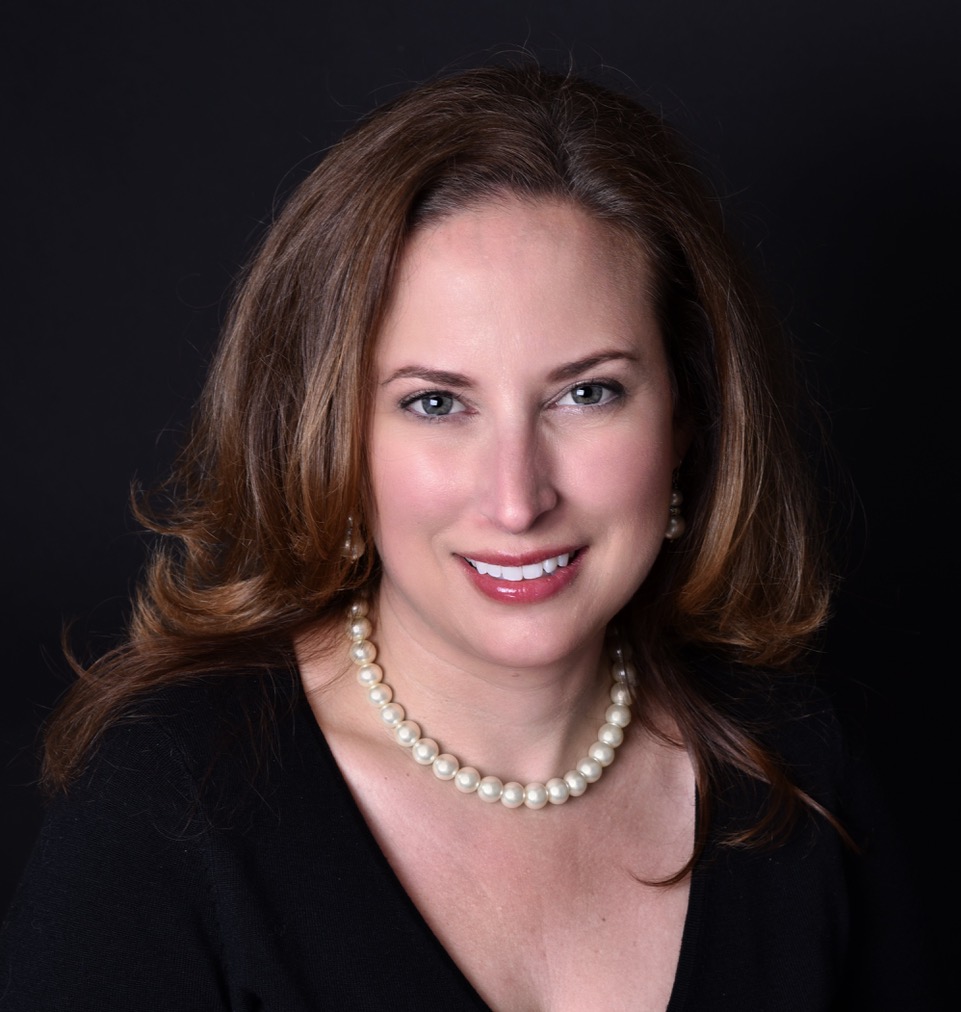
|
8:30 am - 9:15 am Lasers in Hygiene Applications
Greater Than the Sum of Their Parts: How Utilizing a Combination of Tactics Leads to the Best Patient Outcomes
Nicole Fortune, MBA, RDH | Richmond VT
Track: Lasers in Hygiene Applications
Audience: All Levels
As more research connects oral health to systemic health, the dental clinician plays an increasingly important role in patient care through their lifetime. Scalers have been utilized for over 100 years and the burden of periodontal disease continues to rise. The scaler is a mono-approach to treating the dynamic process of oral inflammatory conditions.
Even with the advent of new technologies, clinicians continue to seek a single tool or procedure that will not only assist them in returning their patients to optimal oral health but also be the cornerstone of maintenance. The problem with searching for a single technology is that the process of eliminating disease and restoring oral health is multi-factorial. Today’s modern procedures offer solutions to predictably treat the many aspects of periodontal disease from precision debridement to effective health maintenance.
Educational Objectives:
- Explain the rationale for a multi-resource approach to nonsurgical periodontal treatment.
- Recognize the benefits of individual products and procedures to long-term success in periodontal treatment.
- Consolidate implementation of various treatment modalities into a concise workflow.
- Analyze clinical cases and identify ideal treatments to create a predictable success.
Back to top
|
|
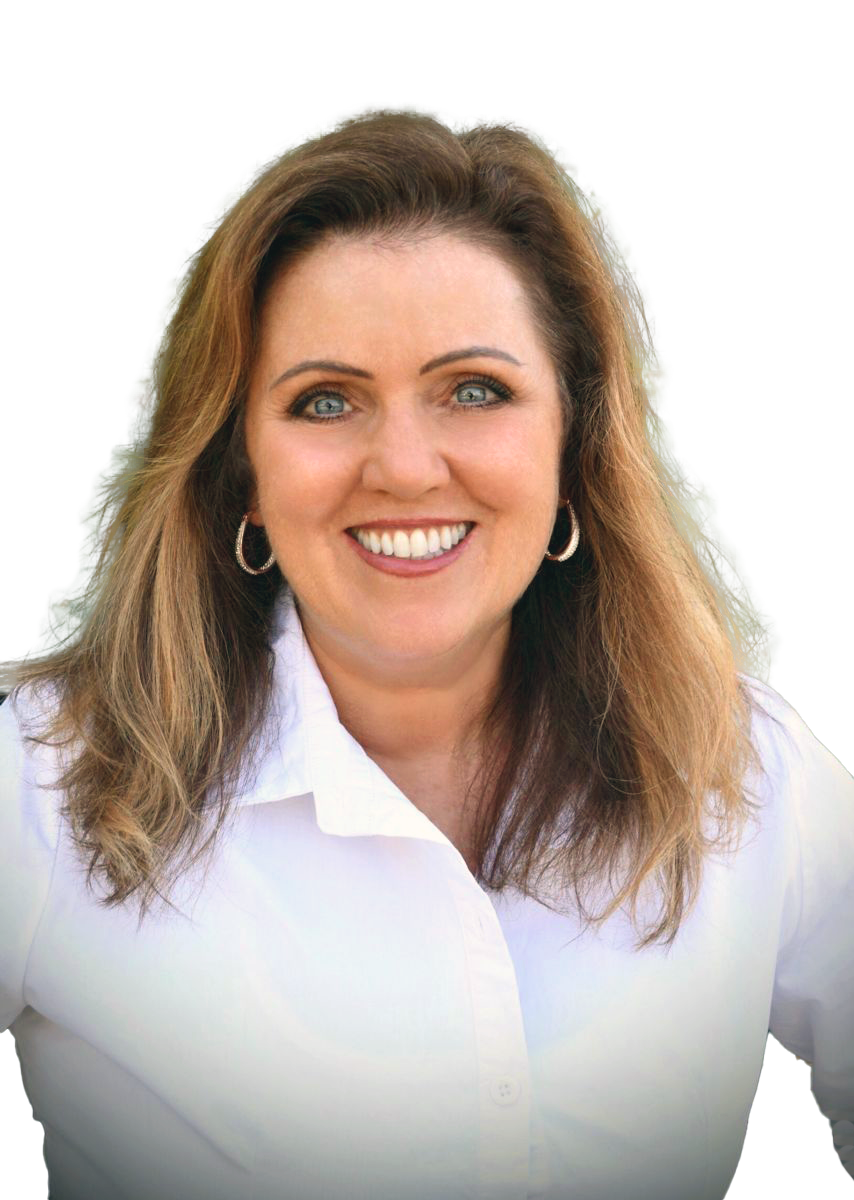
|
9:15 am - 10:00 am
Using Lasers in the Hygiene Department to Give Your Patients the Highest Standard of Care
Lynn Atkinson, RDH, Private Practice | Torrance, California, USA
Track: Dental Hygiene
Audience: All Levels
Lasers are used in the hygiene department as an adjunctive therapy and provide numerous benefits to improve patients’ dental health and overall health. Lasers are now becoming the standard of care for many practices. This presentation is for the inquisitive beginner and advanced clinician looking for laser therapies to elevate the dental care for their patients. Some of the most common laser procedures used in hygiene will be introduced along with ways to implement these protocols in the practice.
Educational Objectives:
- Identify the most common laser procedures used in the hygiene department.
- Learn how these laser procedures are making a difference in patient care and outcomes.
- Understand how to introduce and implement this technology in our practices.
Back to top
|
|
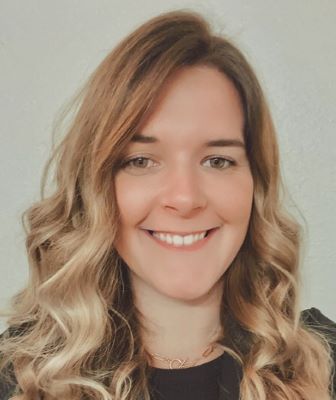
|
10:45 am - 11:15 am
Periodontal Treatment for the Post-Antibiotic Age
Meghan Radcliff, RDH | Fieldon, Illinois USA
Track: Lasers in Hygiene Applications
Audience: All
Treating periodontal disease not only improves oral health, it also reduces a chronic infectious burden on patients’ immune system. We’ve prescribed antibiotics for decades, but they have a temporary, limited effect and we’ve entered the post-antibiotic age when antibiotics are no longer as effective as they once were. Laser therapy combined with Perio Tray™ therapy can overcome the limitations of antibiotics and give your patients long-term success. Attend this presentation to learn the science behind the use of peroxide and case presentation ideas.
Educational Objectives:
- Identify the benefits and limitations of antimicrobials with oxidative and oxygenating reactions for biofilm management.
- Recognize patient candidates who can benefit from Rx Tray therapy and the appropriate tray treatment protocol.
- Use a simple number to help patients understand the importance of treatment.
Back to top
|
|






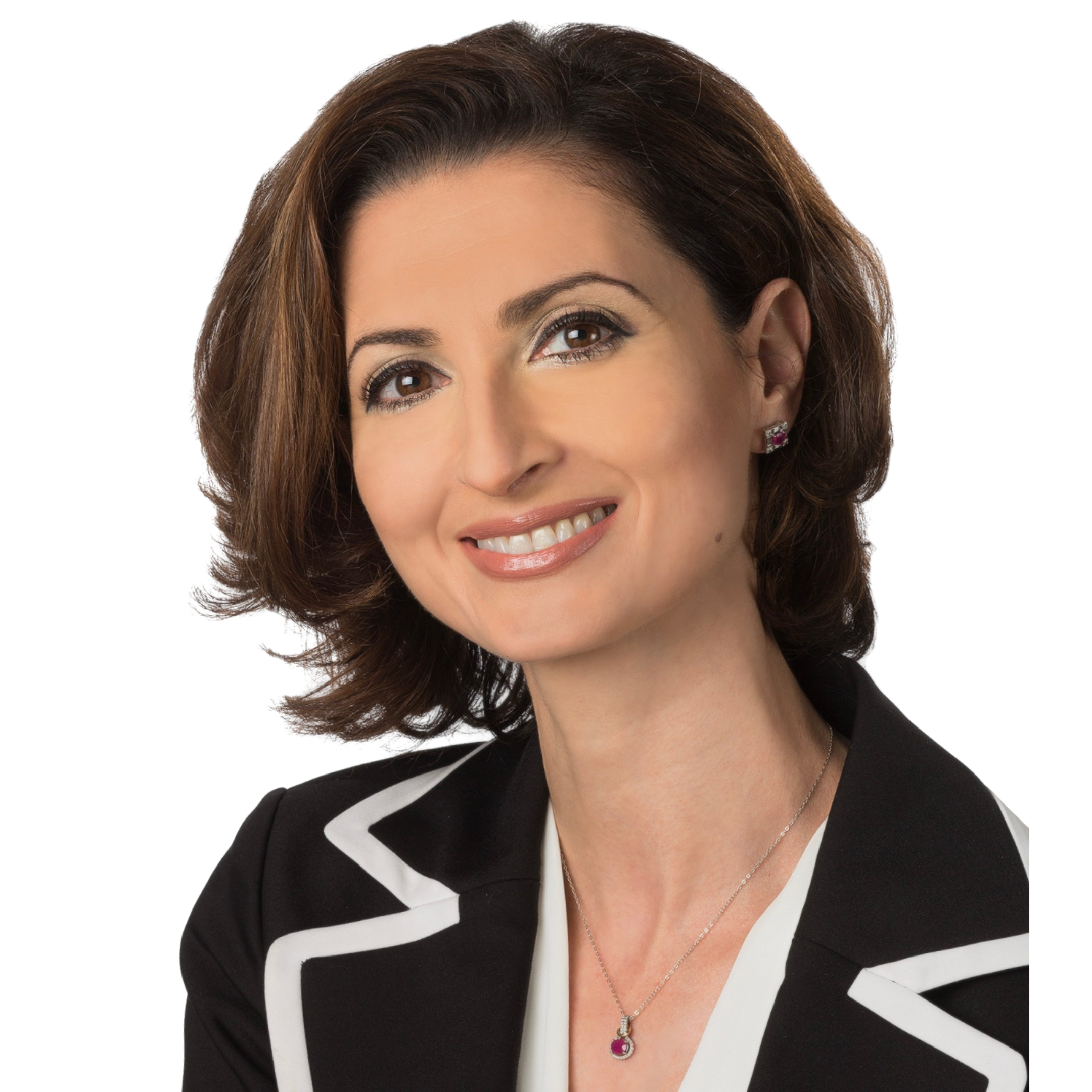
|
11:15 am - 12:00 pm Lasers in Hygiene Applications
"Alone We Can Do So Little, Together We Can Do So Much" - Dentists and Hygienists Working Together
Moderator: Lynn Atkinson, RDH, Torrance, California, USA
Panelists: Yolanda Cox, RDH; Nicole Fortune, MBA, RDH, Richmond, Vermont, USA; Meghan Radcliff, RDH, Fieldon, Illinois, USA; Angie Wallace, RDH, Owasso, Oklahoma, USA; Mel Burchman, DDS, MALD, Longhorn, Pennsylvania, USA; Marina Polonsky, DDS, Ottawa, Ontario, Canada
Track: Dental Hygiene
Audience: All Levels
What does it take to create a multifactorial hygiene department that utilizes adjunctive therapies to treat the many periodontal diseases we encounter every day? If we work individually or work with one modality we may not achieve the optimum results or outcomes for our patients. Join us as we give you several ideas from hygienists and dentists working together in order to give our patients the best opportunity to achieve these optimum results. A panel discussion will bring several experienced leaders together to bring what has worked in their practice. Questions and discussions will offer attendees a chance to receive valuable information geared towards the goals of their individual practice. Adjunctive therapies to be discussed will include lasers, pain therapy, photobiomodulation (PBM), customized medicament trays, biofilm therapy, probiotics, digital impressions, diagnostic data and collection.
Educational Objectives:
- Discover ways that hygienists and dentists can work together to achieve optimum results for patients.
- Identify adjunctive therapies that can be incorporated into office protocols.
- Engage in a collaborative question-and-answer session and enumerate possible solutions identified by the leadership panel
Back to top
|
|
SATURDAY, APRIL 22
2:15 pm - 5:30 pm Workshops
|
|

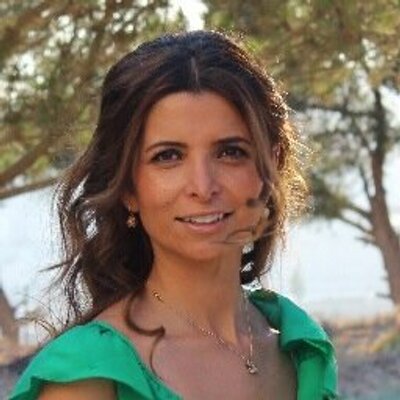

|
2:15 pm - 5:30 pm Workshop
Integrative Healing Workshop
Grace Sun, DDS, FAACD, MALD, MAGD, MICOI; Rana Al Rasheed, BDS; Bebe Lin, DAOM | Los Angeles, CA, USA
Track: Photobiomodulation (PBM)
Audience: All Levels
Comprehensive management of orofacial pain has traditionally been limited to conservative Western treatment modalities and lifestyle choices. When photobiomodulation and acupuncture are added to the treatment mix, a modern integrative approach presents itself, bringing together the best of Western and traditional Chinese medicine, for a more effective and safe treatment, particularly for chronic conditions. This integrative approach not only addresses compromised physical conditions in need of healing and pain relief but also contributes to homeostasis and to the overall health and well-being of the patient.
In 2018, the World Association for photobiomoduLation Therapy (WALT) defined photoacupuncture as “photonic stimulation of acupuncture points and areas to initiate therapeutic effects similar to that of needle acupuncture and related therapies together with the benefits of PhotoBioModulation (PBM).”1 This workshop will introduce participants to the mechanisms and benefits of acupuncture and PhotoBioModulation as excellent complementary approaches to manage orofacial pain and promote healing. As the development of more convenient, affordable, and user-friendly phototherapeutic devices has become available, access to this treatment modality has expanded to the point where photoacupuncture can now be considered at-home person-centered care (PCC).
This workshop will demonstrate the most common acupuncture points used in dentistry (approximately 20). A photoacupuncture technique will also be reviewed. By the end of this workshop, participants will have a practical technique that they can immediately utilize. Additionally, the presenters will discuss and demonstrate stress management techniques for dental professionals to use both at the office and in their personal life, including mindfulness meditation, breathing techniques, aromatherapy, botanicals, and adaptogens for wellness and sleep hygiene.
Example applications include: Temporomandibular joint (TMJ) management, surgical preconditioning, postoperative recovery and wound healing, tissue regeneration, gagging prevention, reducing chairside anxiety, reducing skeletomuscular discomfort (analgesics), etc.
1Litscher G. Definition of laser acupuncture and all kinds of photo acupuncture. Medicines (Basel). 2018 Oct 30;5(4):117. doi: 10.3390/medicines5040117.
NOTE: This presentation discusses investigational devices that have not yet received U.S. approval or clearance for the specified clinical indications or describes off-label uses.
Format: 1 hour group lecture, followed by a 2 hour hands-on workshop with Dr. Sun and Dr. Al Rasheed.
Educational Objectives:
- Specify acupuncture’s role in pain management and beyond.
- Explain integrative treatment modalities of photoacupuncture.
- Review photoacupuncture mapping technique for immediate clinical application.
Back to top
|
|

|
2:15 pm - 5:30 pm Workshop
ROI for Your 810/980-nm Diode Laser
Edward R. Kusek, DDS | Sioux Falls, SD, USA
Track: Laser Dentistry (Hygiene, Pediatrics, General, Perio, etc.)
Audience: Novice
This 3-hour hands-on course will allow participants to utilize the 810/980-nm diode laser for procedures that a general dentist can perform on Monday with a little guidance from the speaker. Procedures include biopsy techniques, troughing for impressions, aesthetic recontouring, pontic site development, frenectomies, laser-assisted periodontal therapy, laser bacteria reduction, photobiomodulation, and more.
Educational Objectives:
-
Comprehend how to use the 810/980-nm diode laser in proper technique to make treatment faster, more efficient, and more comfortable.
-
Explain how to use photobiomodulation to WOW your patients.
-
Identify insurance codes to get optimum benefit for your patients.
|
|


|
2:15 pm - 5:30 pm Workshop
Laser-Assisted Esthetic Crown Lengthening
Course is full - registration closed
Dr. Walid Altayeb, DDS, MSc, PhD | Dubai, United Arab Emirates (UAE)
Track: Laser Dentistry
Audience: All Levels
The popularity of smile enhancement therapy has increased the rationale for dental esthetic procedures to create a symmetrical and harmonious relationship between the gingival architecture, mouth, and surrounding facial structures. Esthetic crown lengthening surgery could be considered a suitable protocol for reducing the excessive gingival display associated with altered passive eruption and achieving more harmonious and symmetrical smiles. This one-day course delivers all the necessary knowledge and steps to successfully diagnose and provide a treatment plan, as well as explain the safe applications of laser wavelengths and operational parameters during surgical crown lengthening.
The workshop comprises didactic scientific lecture, clinical cases discussion, and additional hands-on experience in performing the crown lengthening procedure with a selected laser wavelength. Each participant will gain hands-on experience with a selected laser wavelength performing surgical crown lengthening on animal jaws including:
Educational Objectives
- Learn how to meet the esthetic parameters through crown lengthening.
- Identify the four possible scenarios of crown lengthening surgery.
- Compare flap and flapless crown lengthening, and specify when and why each is performed.
- Demonstrate and apply laser techniques in esthetic and restorative-driven crown lengthening procedures.
- Develop the skills and ability to perform crown lengthening surgery.
Back to top
|
|
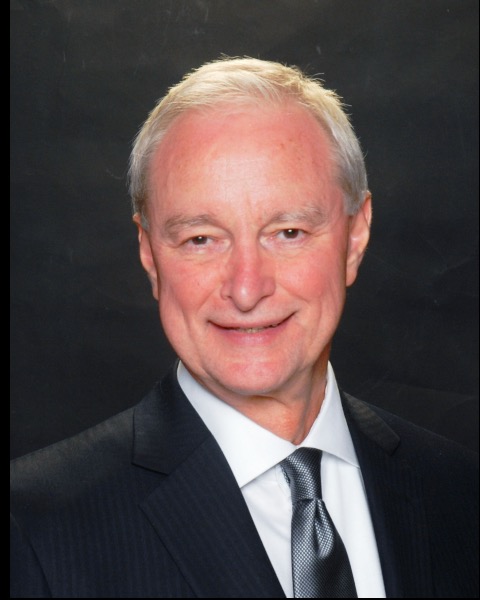

|
2:15 pm - 5:30 pm Workshop
Open Versus Closed Flap Laser Periodontal Surgery
Course is full - registration closed
Samuel Low, DDS, MS, MEd | Palm Coast, FL, USA
Track: Periodontology
Audience: All Levels
While traditional methodologies such as flap and osseous procedures have resulted in success, their acceptance by the lay public has been marginal. Various dental laser wavelengths utilized to manage periodontitis have demonstrated clinical success with positive patient-related outcomes and a concomitant decrease in recession. To attain success, a minimally invasive laser procedure must adhere in detail to the principles of wound healing. This workshop will identify each step and create in a workbook format the details of open versus closed flap protocols from de-epithialization to degranulation and decortication. Each participant will experience laser flap procedures. Nonlaser components may include microthin ultrasonics and innovative medicinal air delivery systems. Adjunctive steps and indications will be introduced including osseous grafting and biologic mediators to enhance regeneration. Postoperative management systems along with case presentation and marketing will be explored along with third-party coding.
Educational Objectives:
-
Determine case selection for open flap versus closed flap laser procedures including indications.
-
Develop in a stepwise fashion a comprehensive open versus closed flap laser periodontal procedure resulting in decreased pocket depth and minimal recession.
-
Create positive patient management including acceptable patient-related outcomes.
Back to top
|
|

|
2:15 pm - 5:30 pm Workshop
Let's Get Physical - Lasers, Adjunctive Therapies, & Modalities: A Hands-on Rotation Workshop
Lynn Atkinson, RDH | Torrance, California, USA
Track: Dental Hygiene
Audience: All Levels
In this workshop attendees will rotate to different educational stations to learn about different adjunctive therapies through an informative hands-on forum. Attendees will have the opportunity to ask specific questions and get more comfortable with products and therapies. Attendees will also be able to identify the products and therapies that fit into one’s individualized practice. Adjunctive therapies include but are not limited to:
- Lasers (Ultradent, Biolase, Deka) and Eyewear (Innovative Optics)
- Photobiomodulation (Oral IQ, Thor, Summus)
- Medicament Carriers (customized medicament trays)
- Dental Hygiene Protocols (Perio Protect, EMS Guided Biofilm Therapy)
- Diagnostic therapies (Florida Probe)
- Oral Health Care Products (StellaLife)
Educational Objectives:
- Compare different adjunctive therapies through an informative hands-on forum.
- Recognize the products and therapies that fit into your individualized practice.
- Review the techniques and advantages of various products and therapies.
Back to top
|
*Schedule subject to change without notice
THANK YOU TO OUR SPONSORS & EXHIBITORS
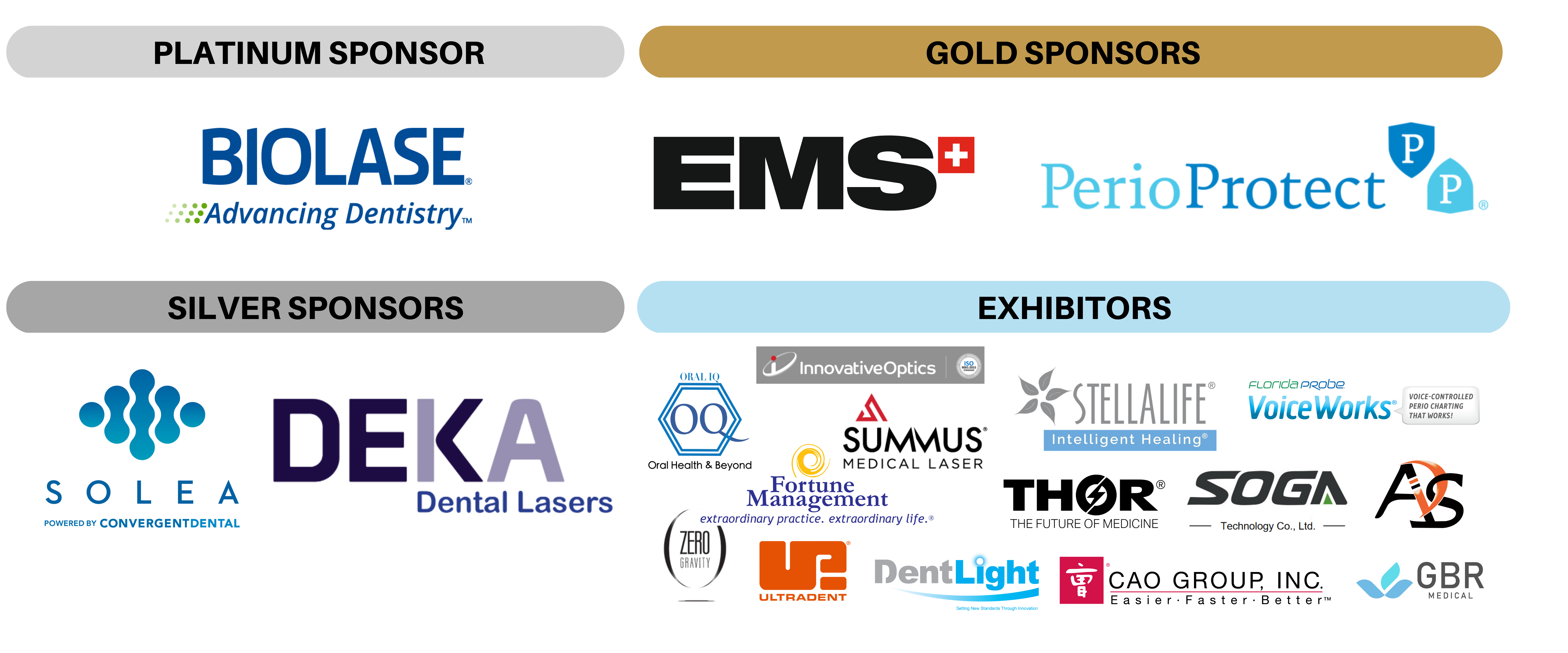
2023 Conference Committee
|

Dr. Samuel Low
|

Dr. James Carreiro
|

Dr. Walid Altayeb
|
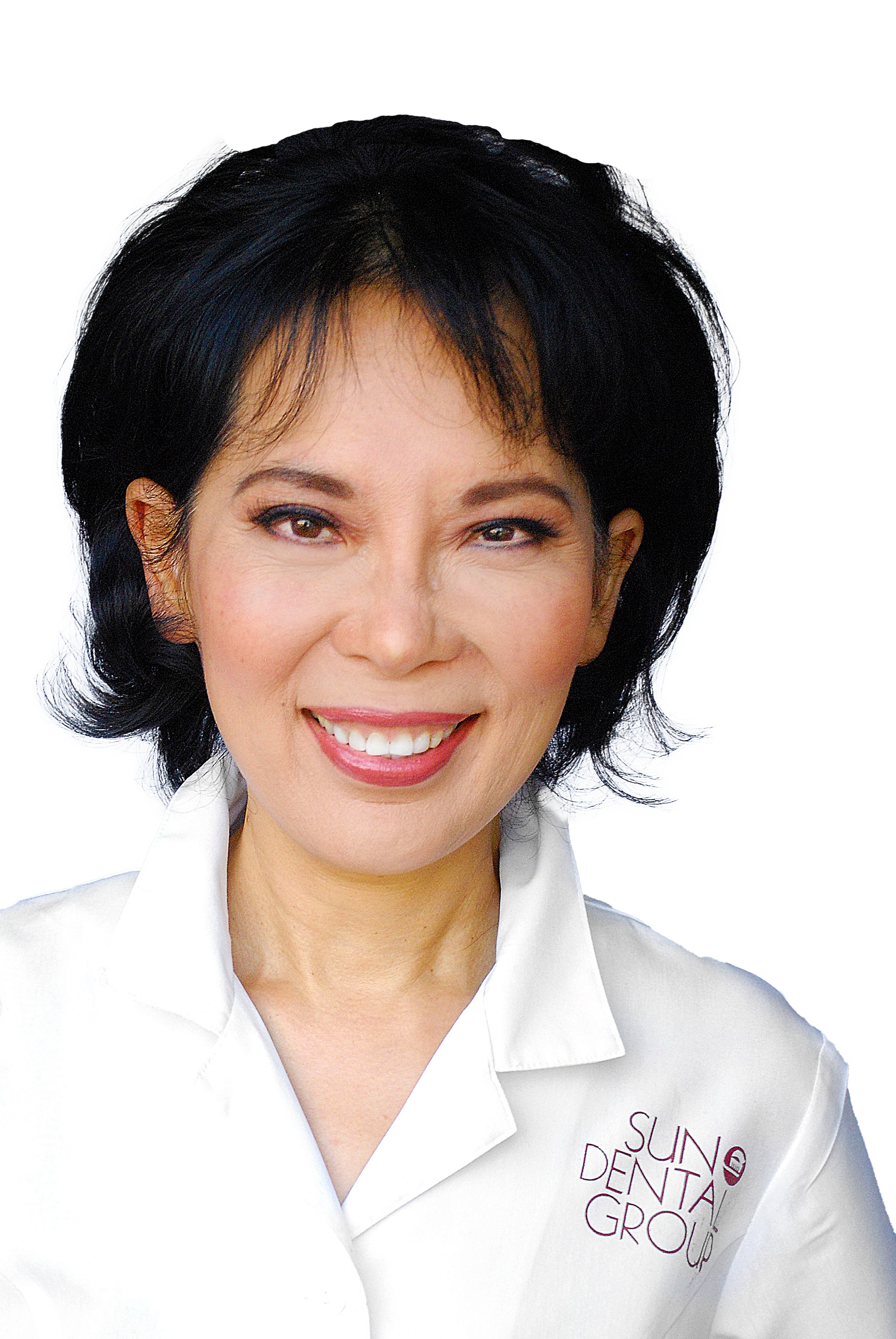
Dr. Grace Sun
|
|
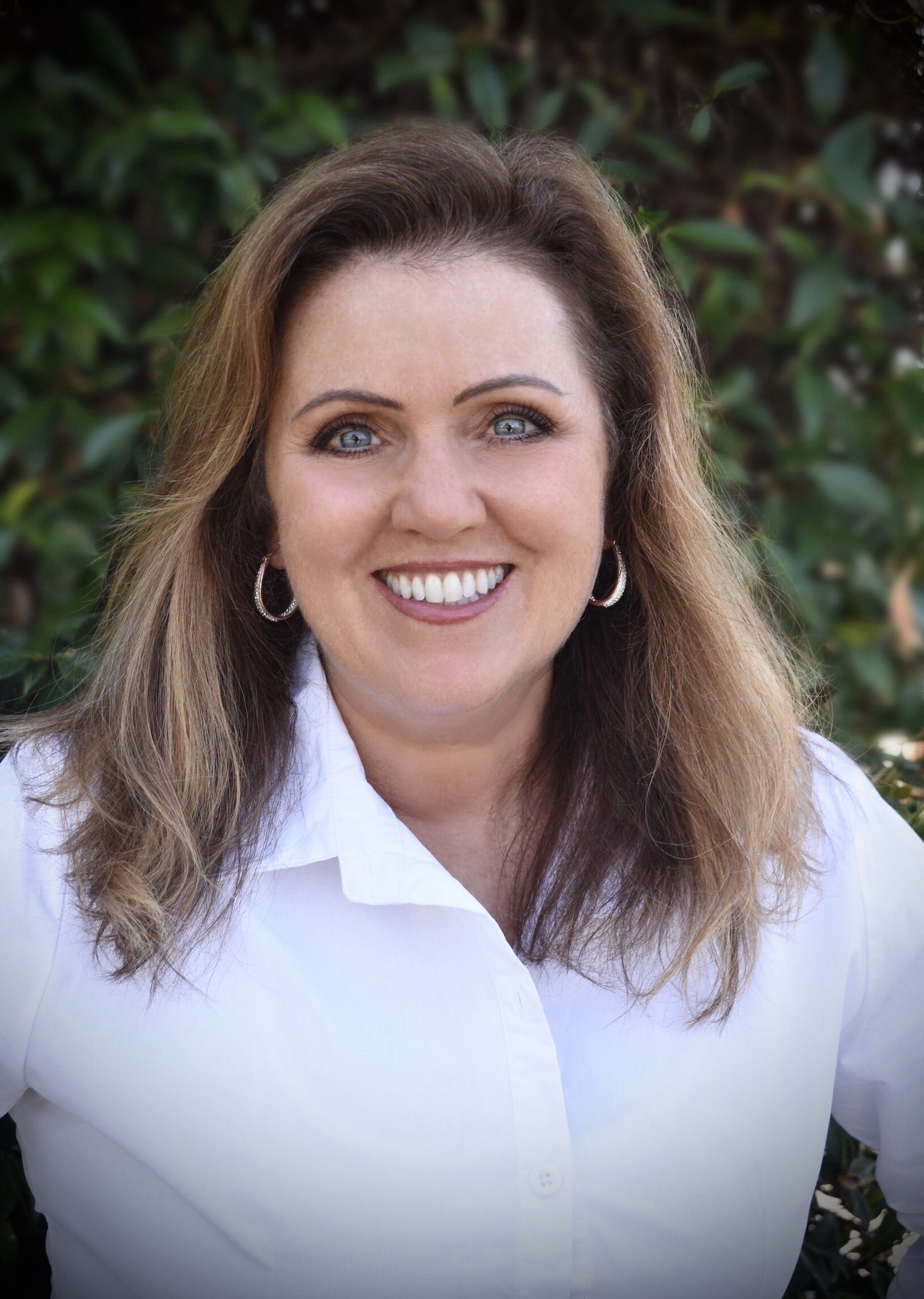
Lynn Atkinson, RDH
|

Dr. Larry Kotlow
|
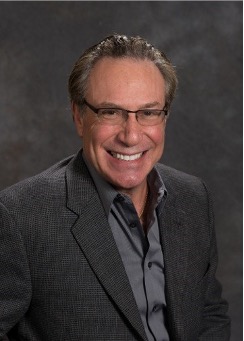
Dr. Larry Lieberman
|
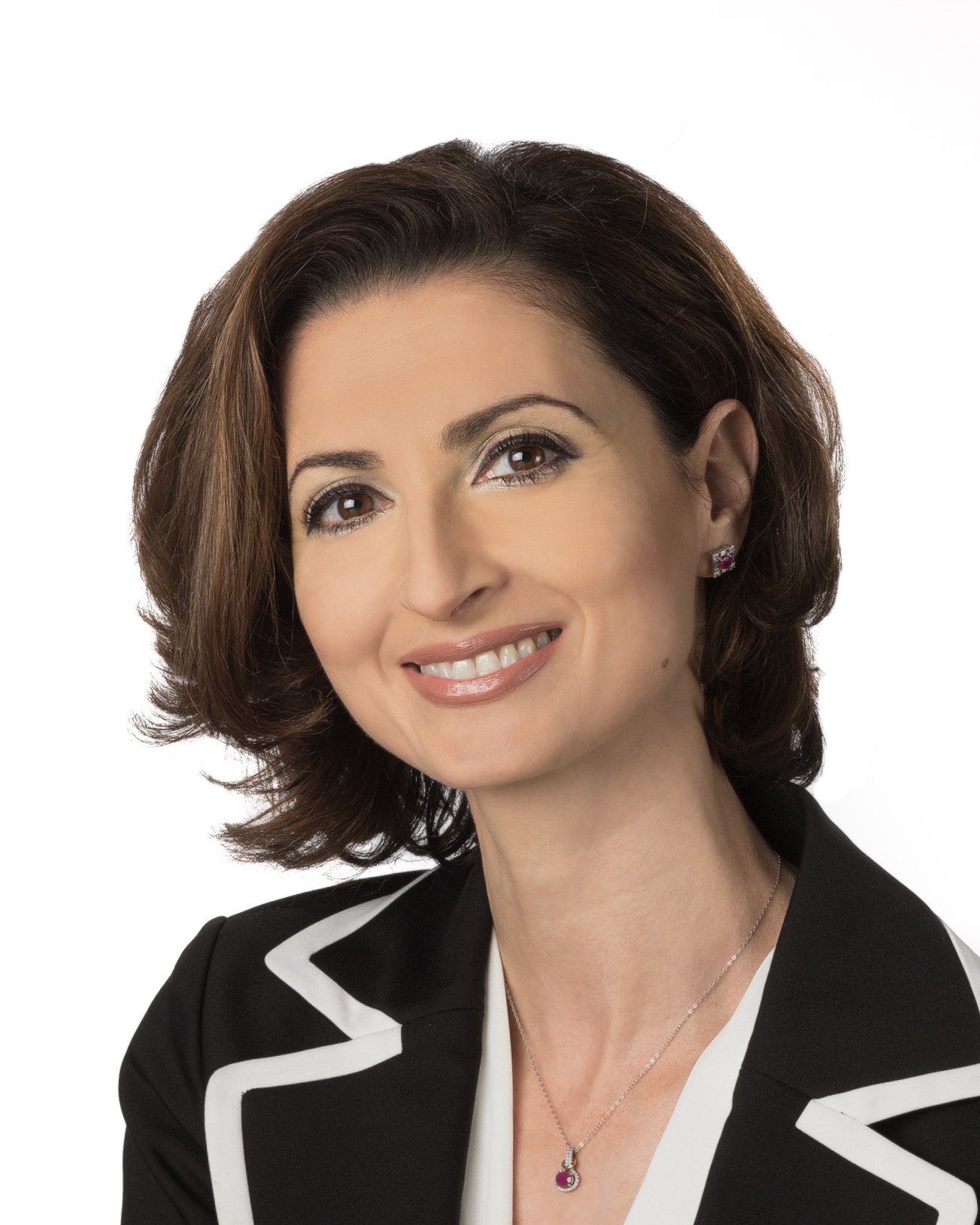
Dr. Marina Polonsky
|
The Academy of Laser Dentistry (ALD) is a not-for-profit organization qualifying under Section 501c(3) of the U.S. Internal Revenue Code.The Academy of Laser Dentistry is an international professional membership association of dental practitioners and supporting organizations dedicated to improving the health and well-being of patients through the proper use of laser technology. The Academy is dedicated to the advancement of knowledge, research, and education and to the exchange of information relative to the art and science of the use of lasers in dentistry. Abstracts, presenter biographies, disclosure information, and product descriptions are published for educational purposes as submitted by the respective presenters and exhibitors. They do not necessarily represent the views of the Academy of Laser Dentistry. ALD is not responsible for the opinions expressed by the presenters, exhibitors, and advertisers. Written permission must be obtained by the Academy to audiotape, videotape, duplicate, and/or distribute any portion of the conference program or proceedings. The ALD Conference presents opportunities that may discuss investigational devices that have not yet received U.S. FDA approval or clearance for the specified clinical indications or describes off-label uses. Practitioners are advised to investigate and consider which medical devices and materials are cleared by the U.S. Food and Drug Administration for safety and efficacy and which are considered experimental, and which procedures are within the applicable scope of their license, competence, skills, and abilities, as established by their education, training, and experience. Clinicians are advised to review the specific indications for use of their devices and to review their operator manuals for guidance on operating parameters before attempting similar techniques on their patients.
© Copyright 2022 Academy of Laser Dentistry. All rights reserved.
|


































